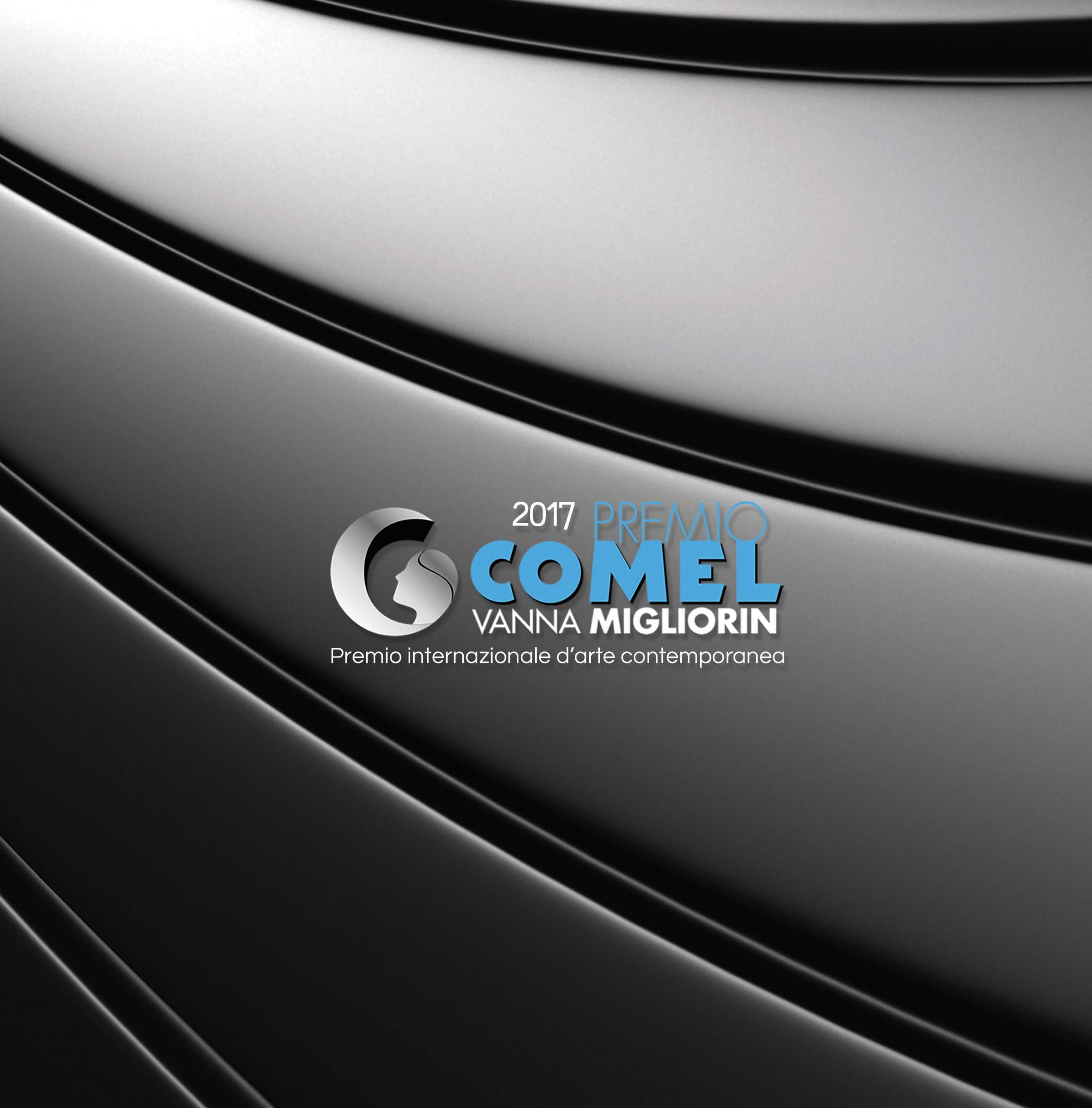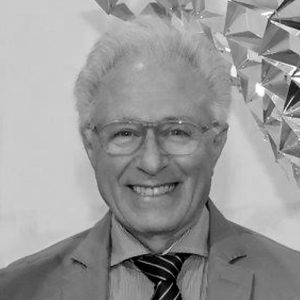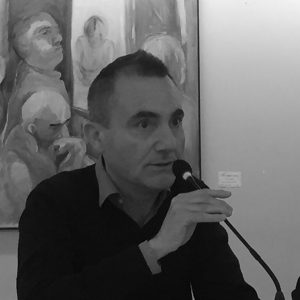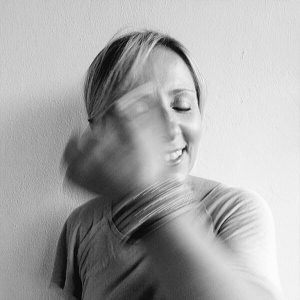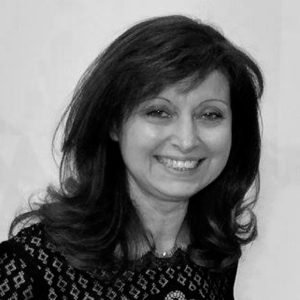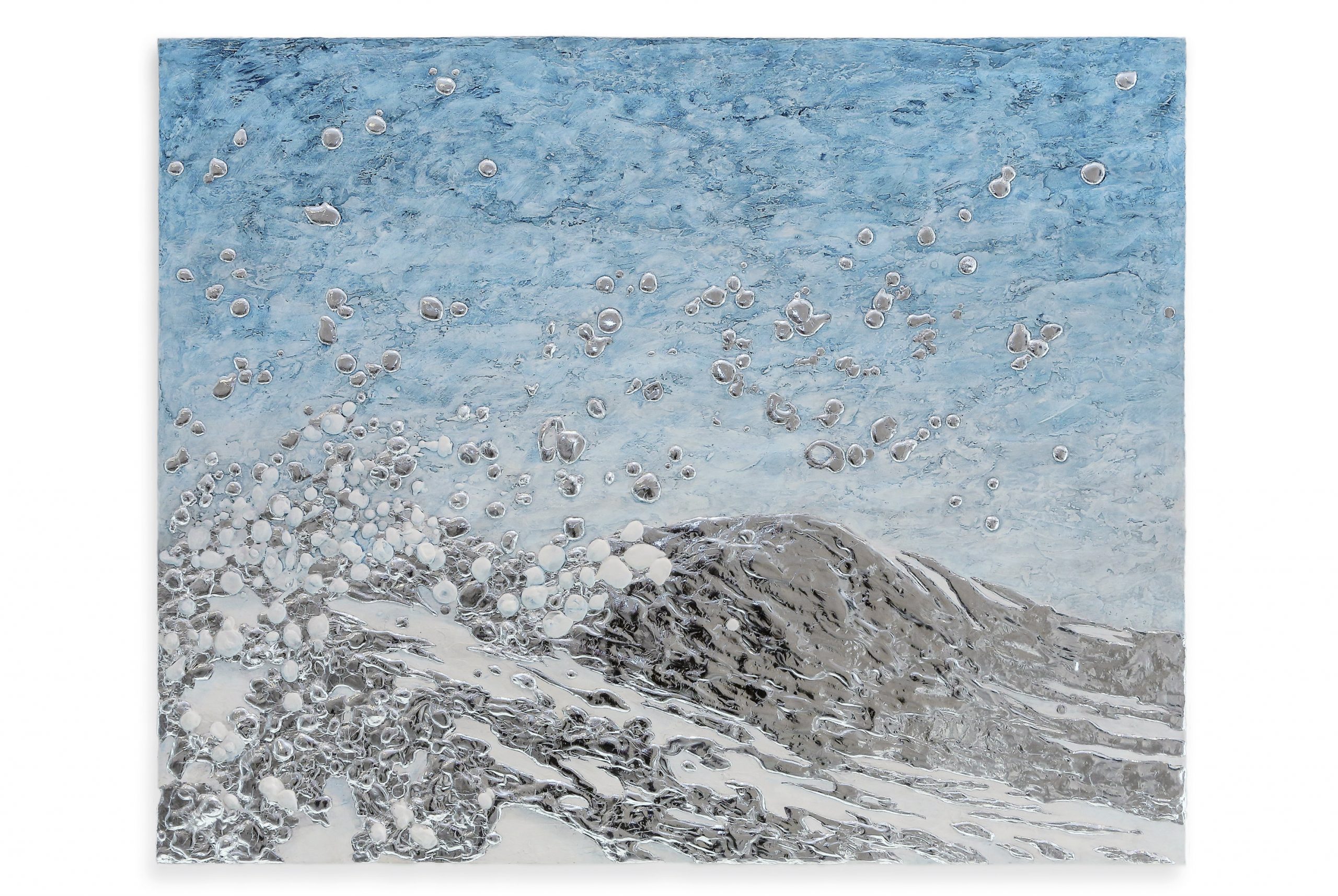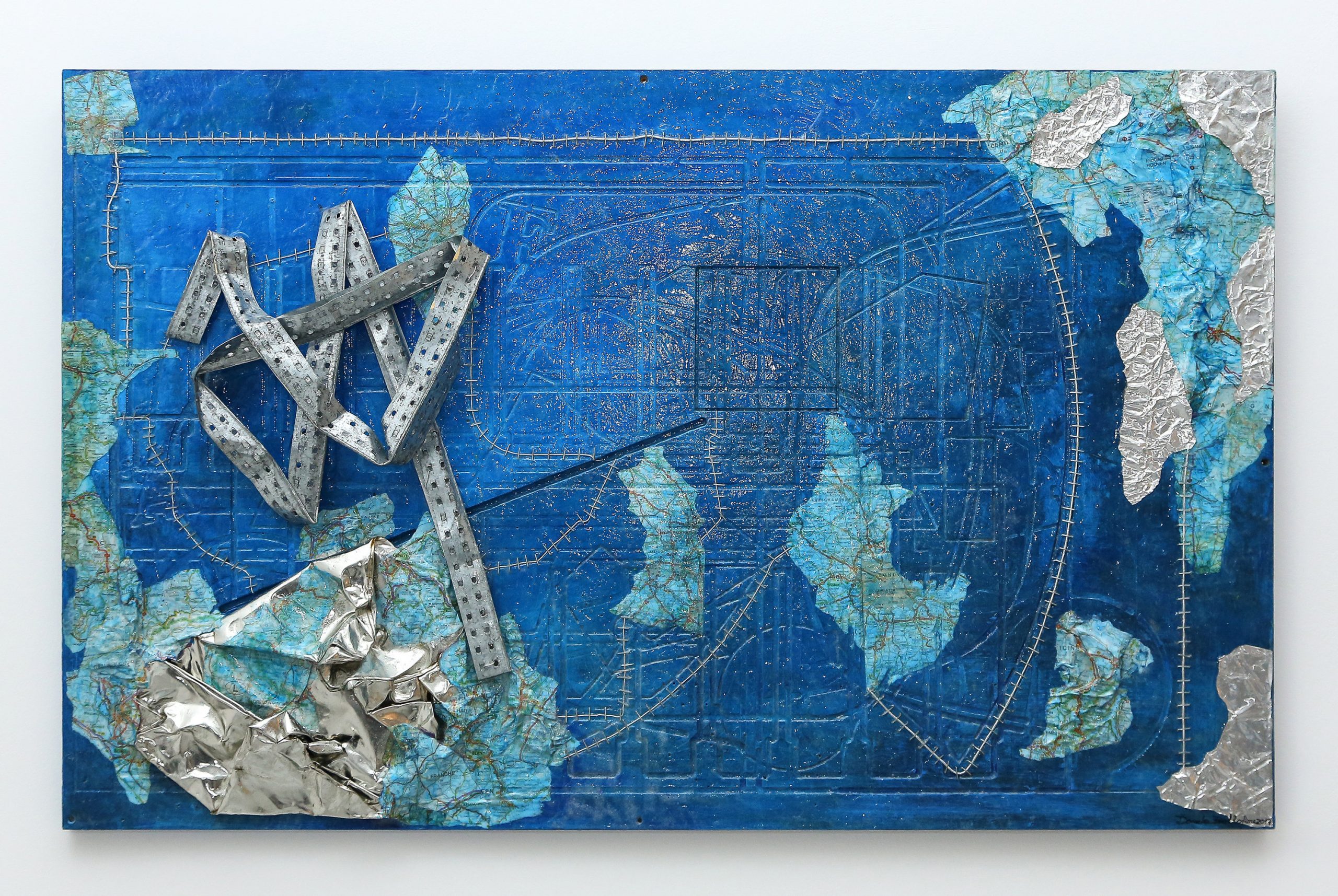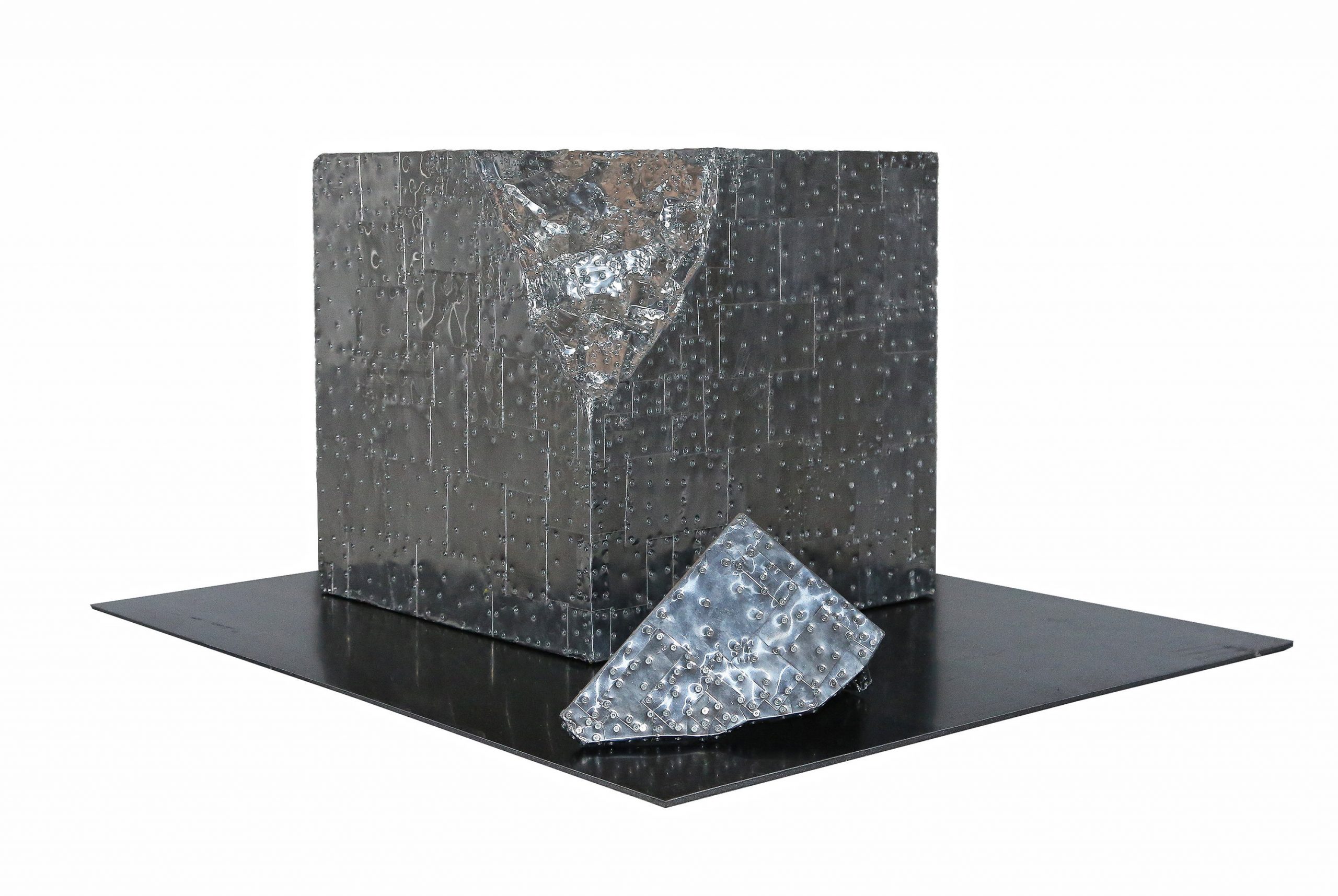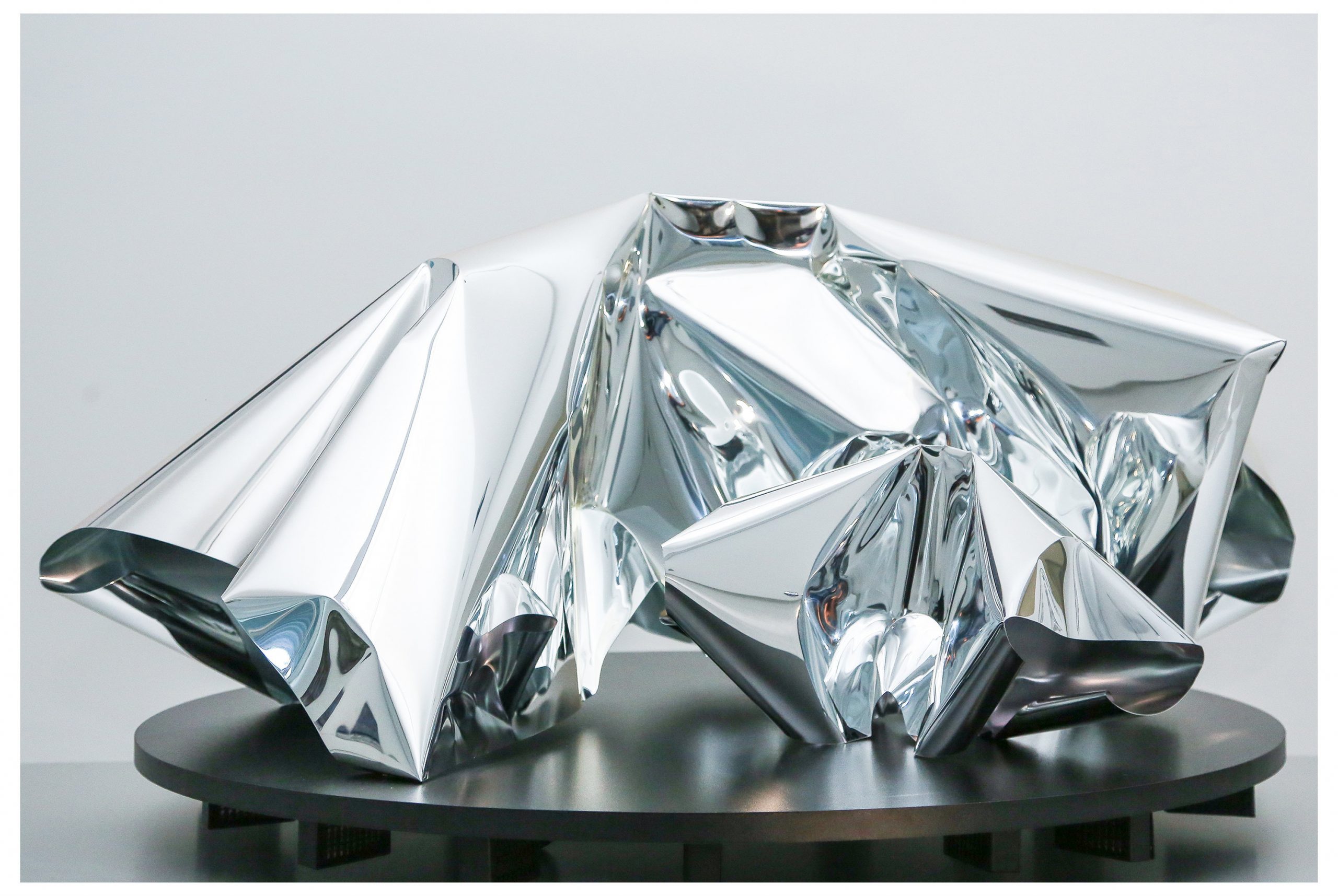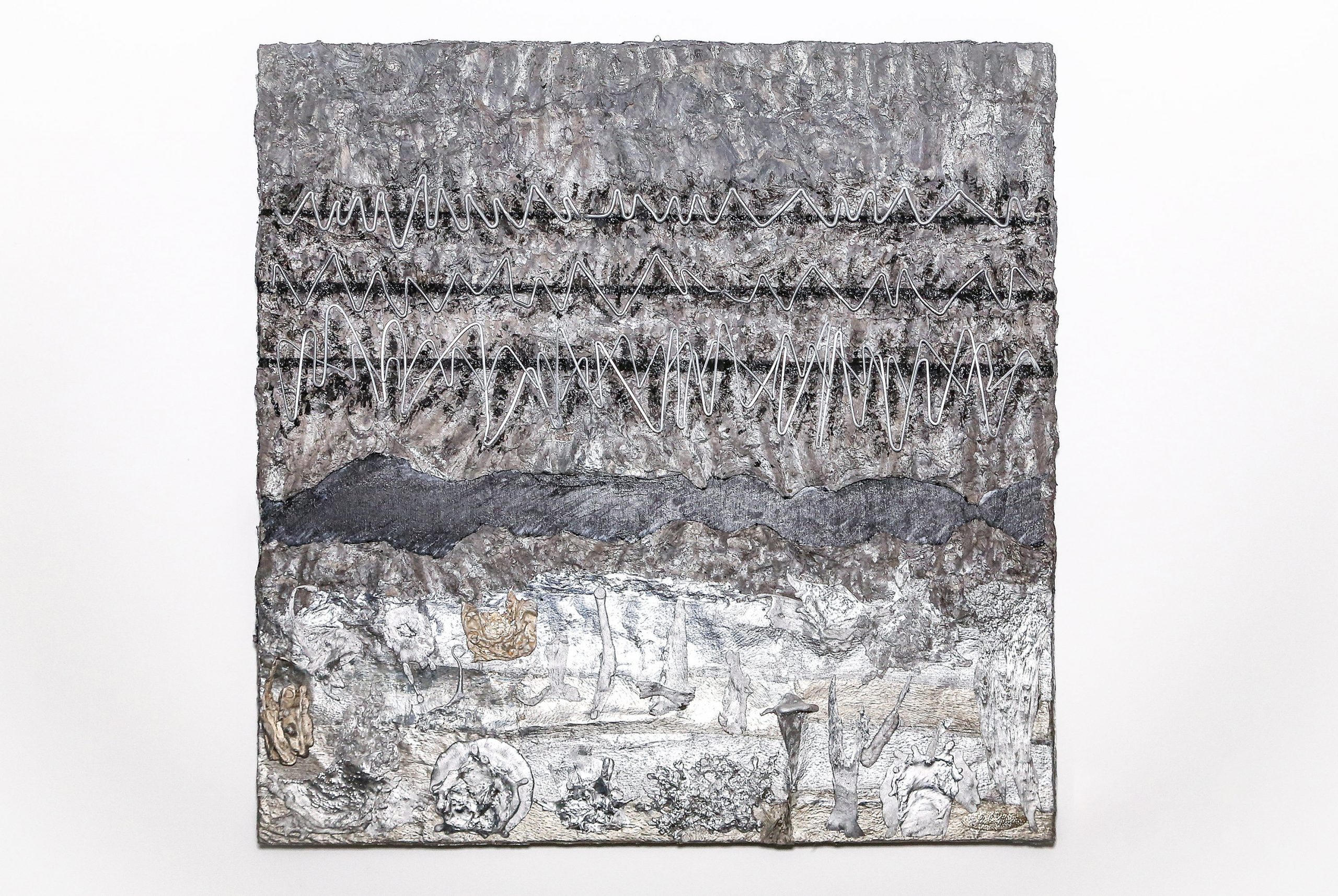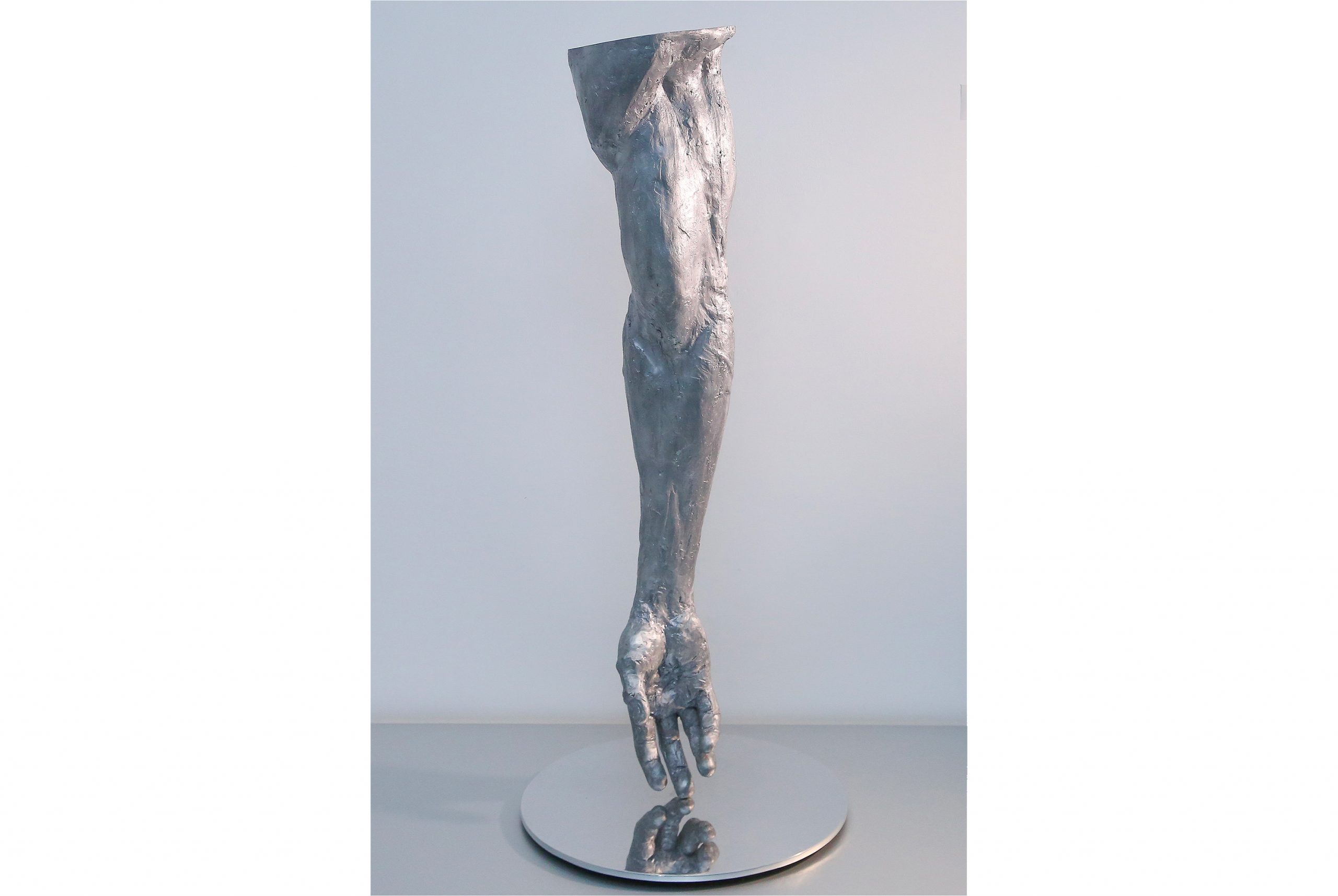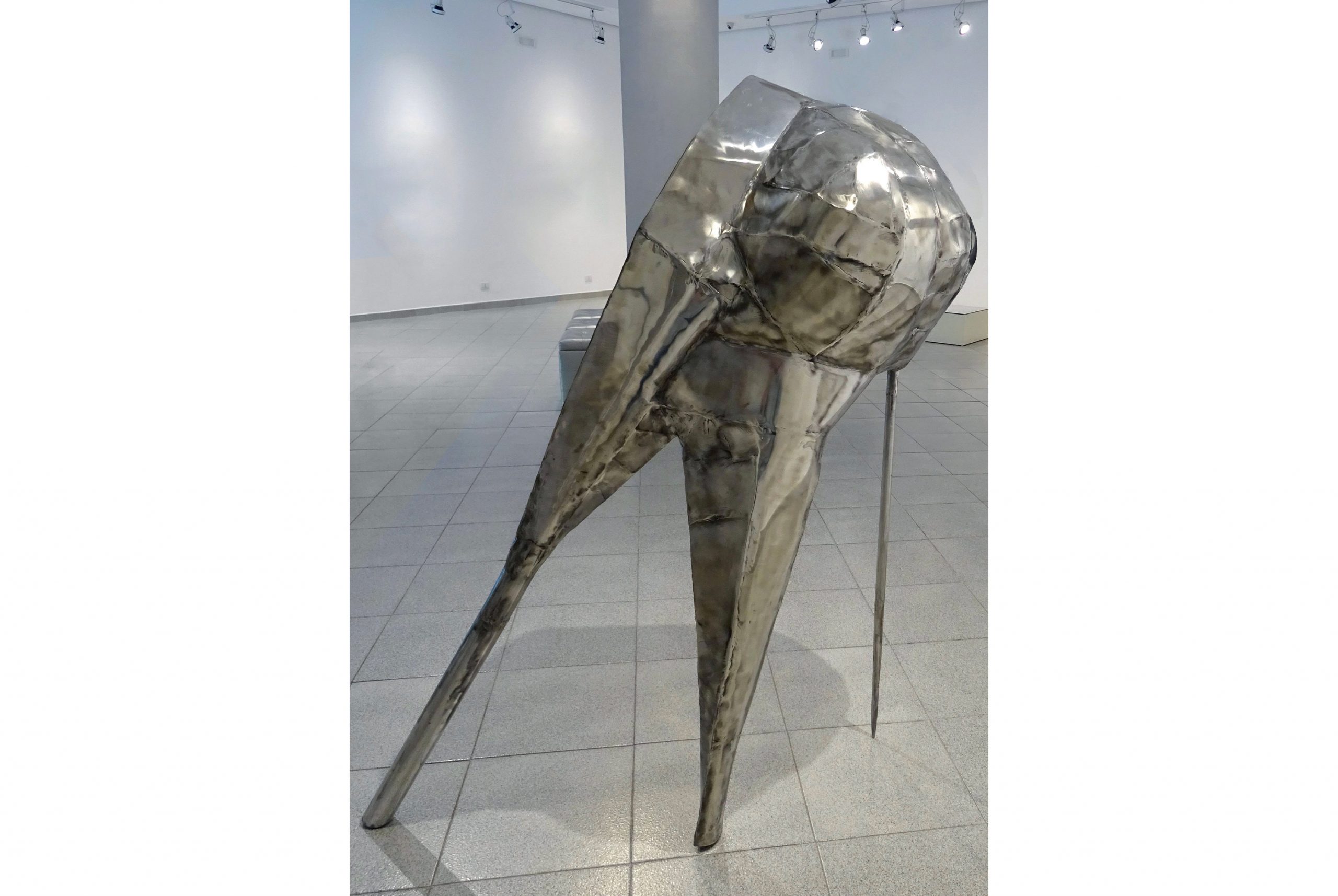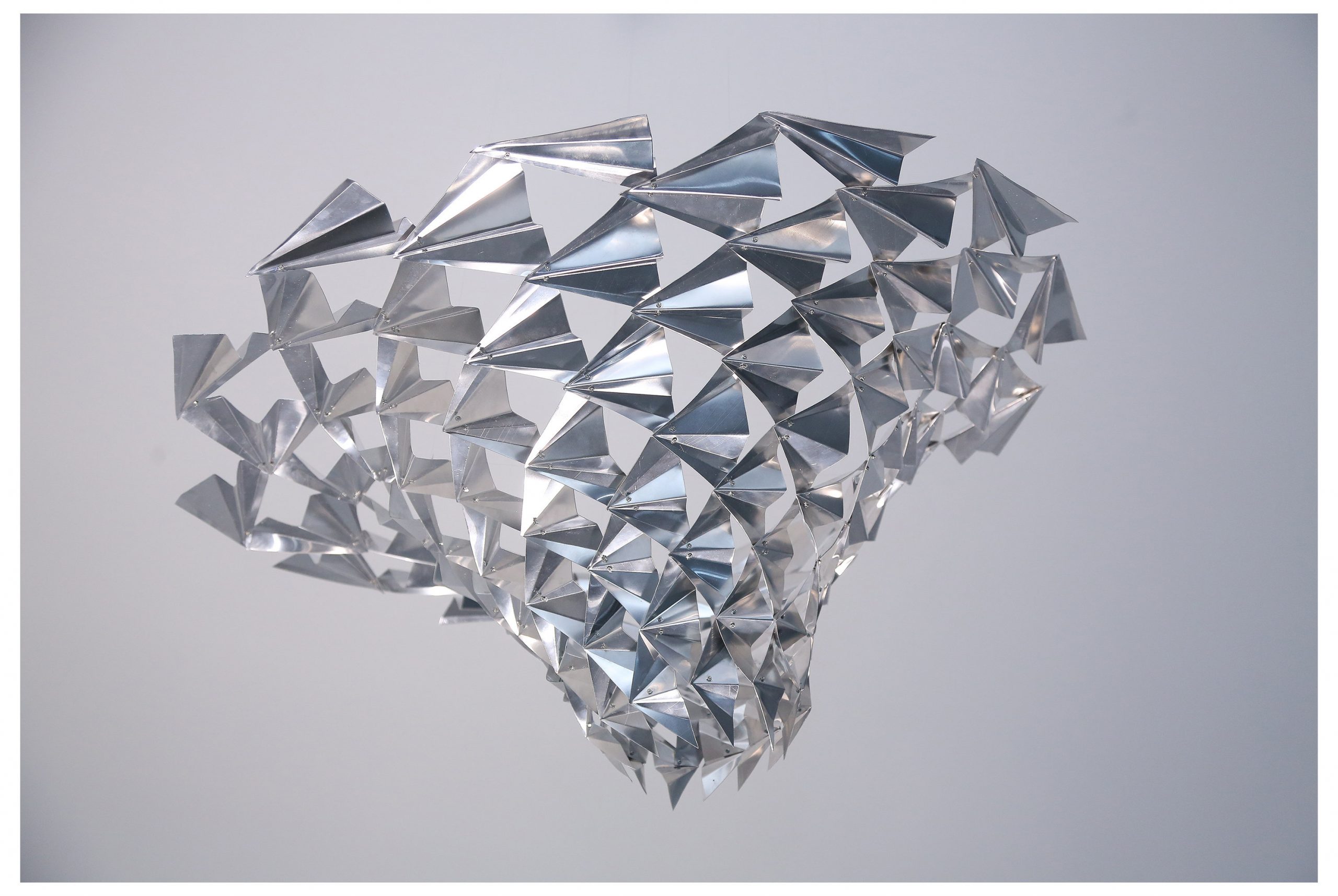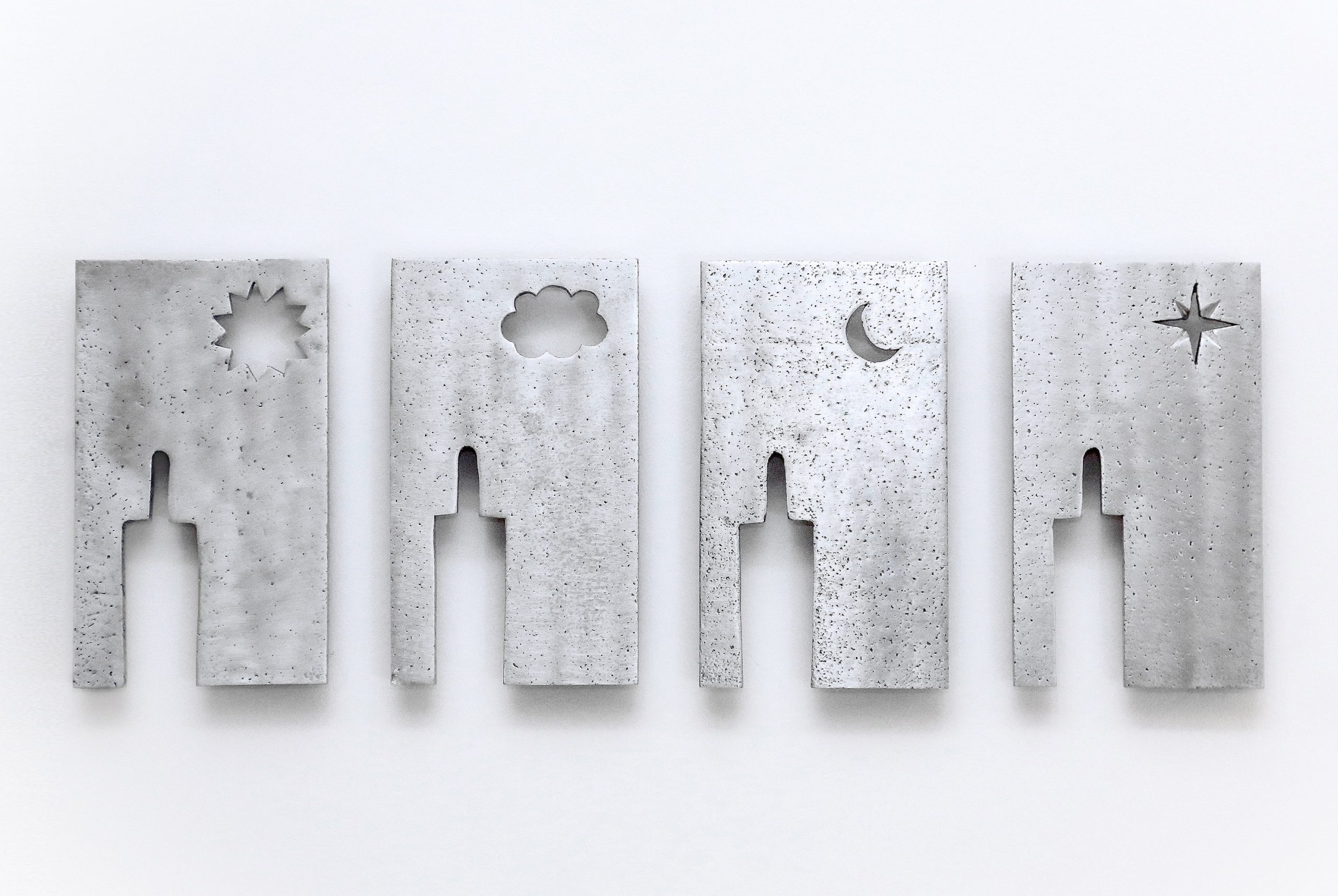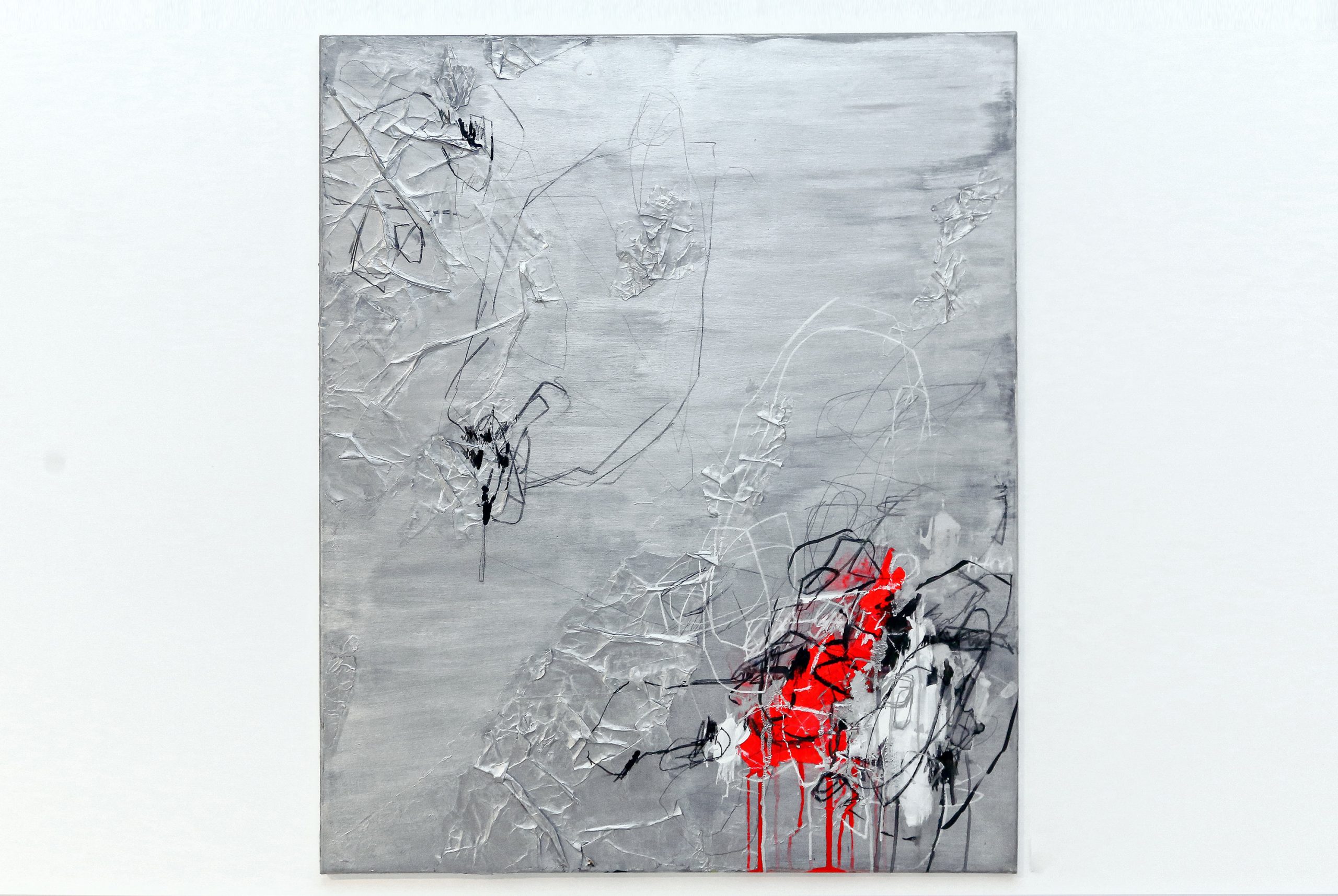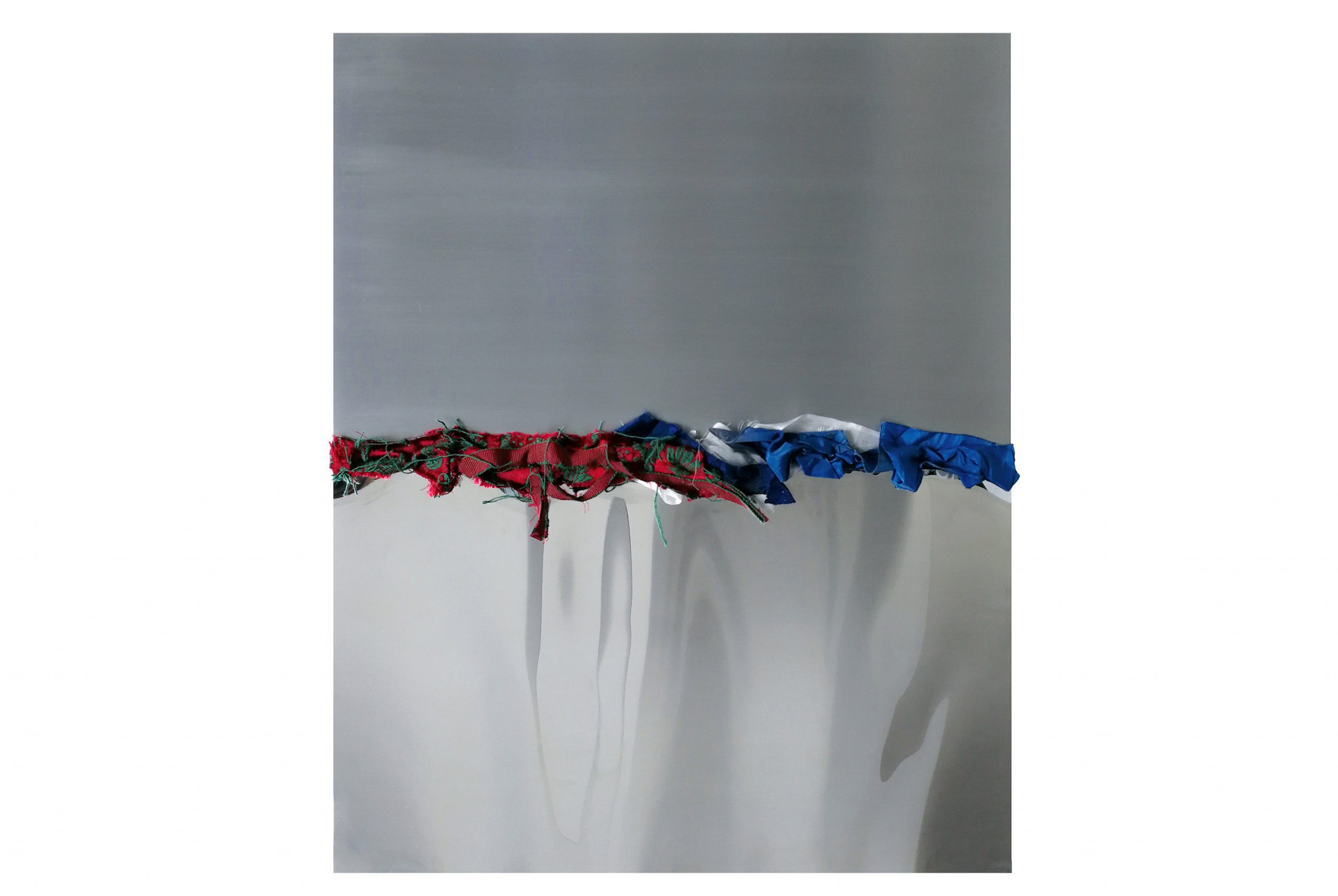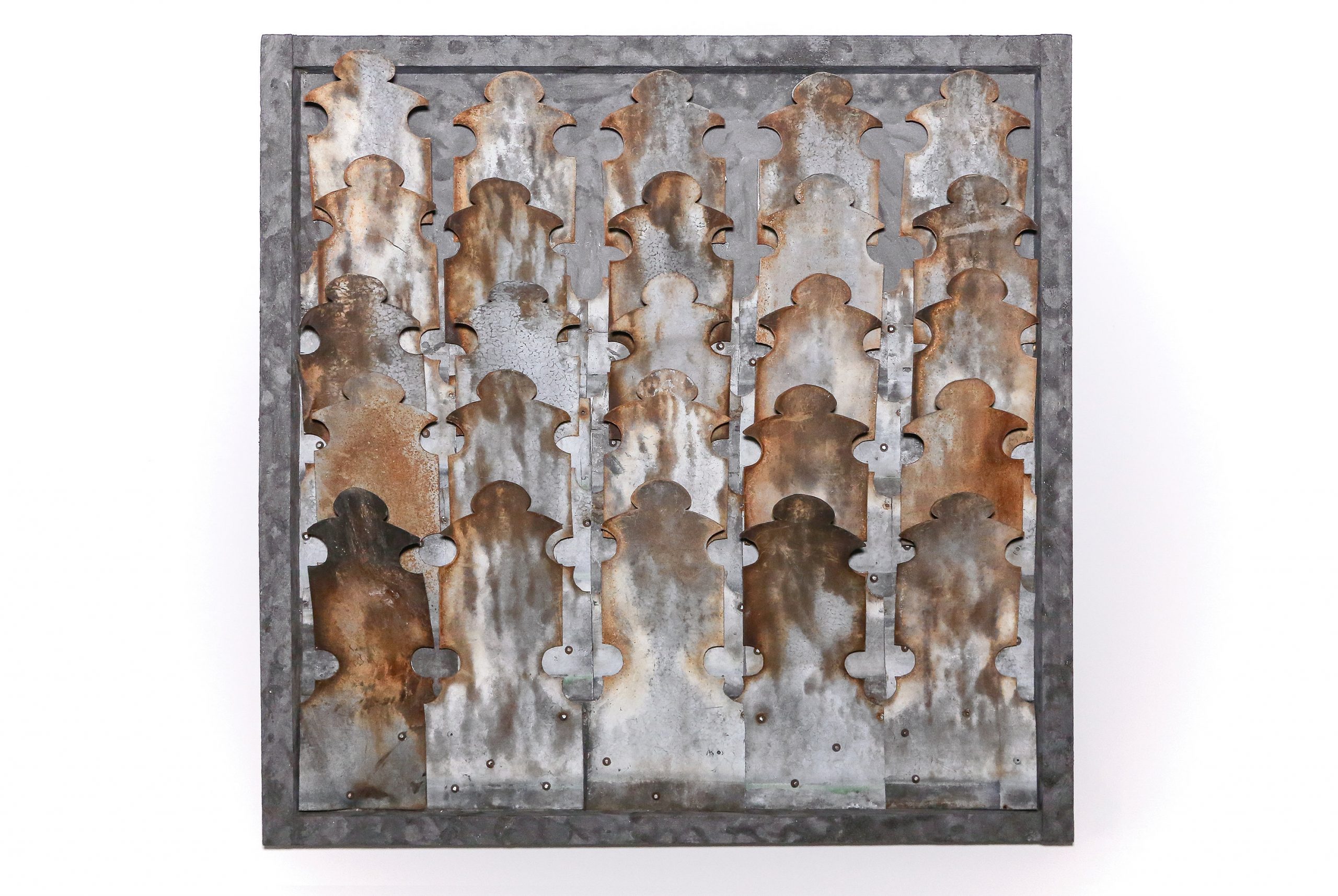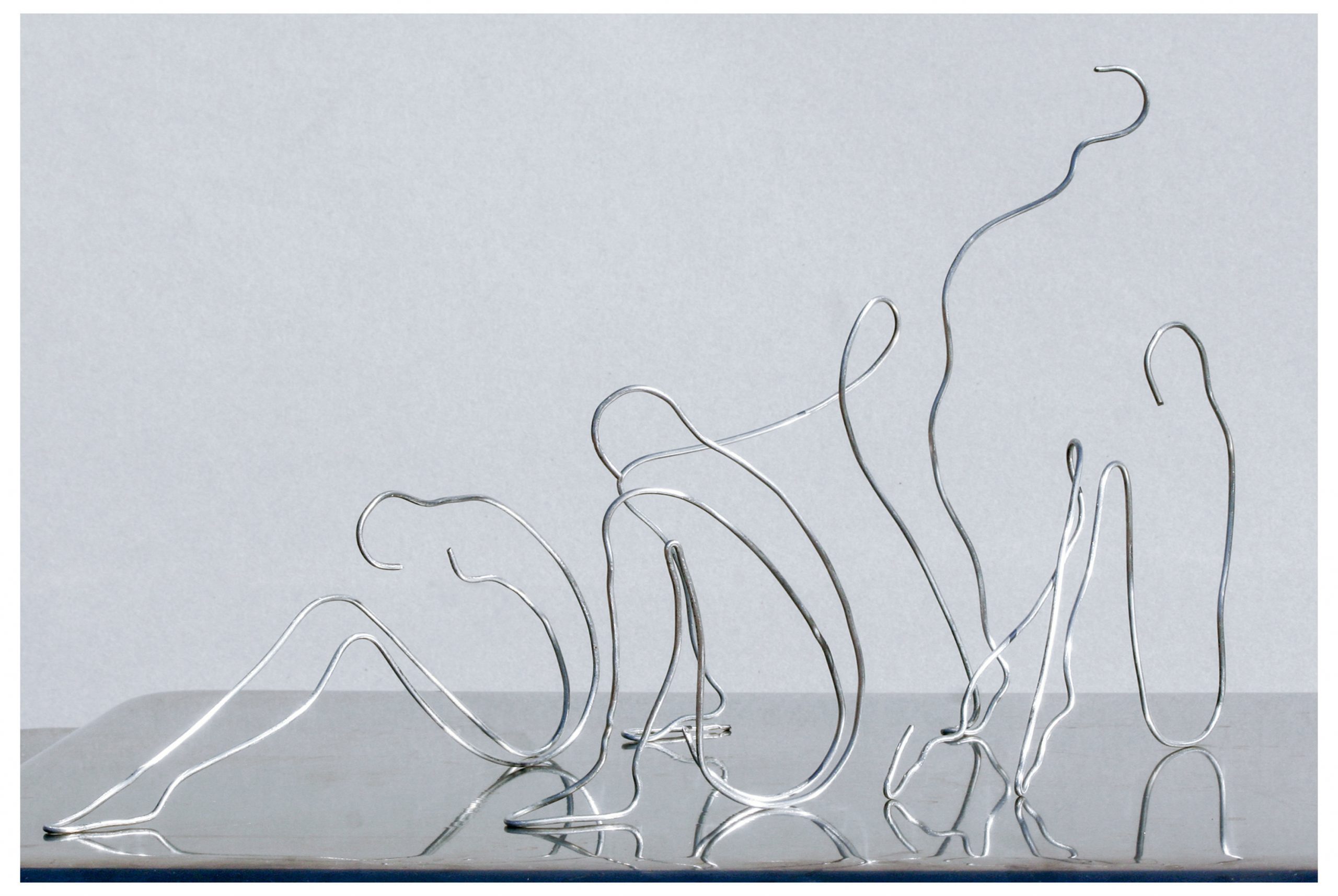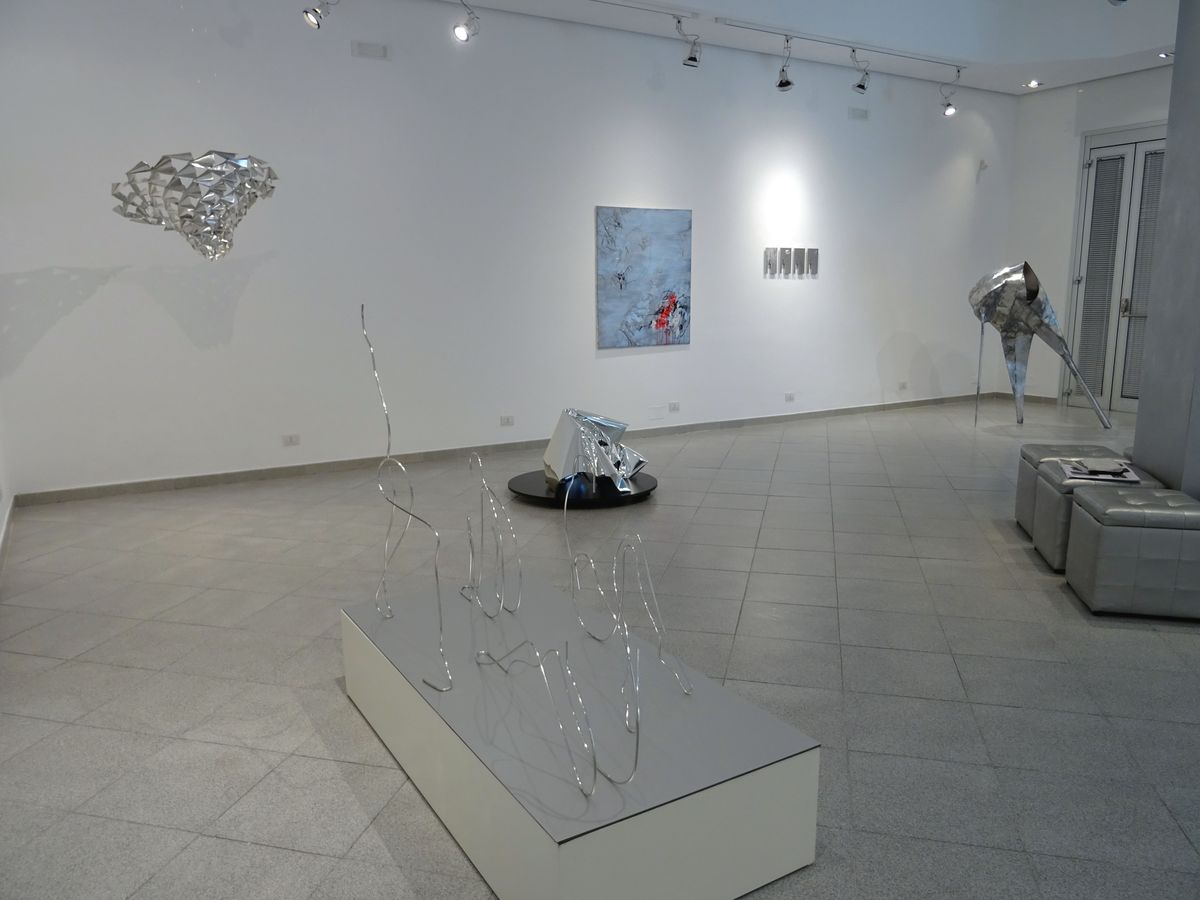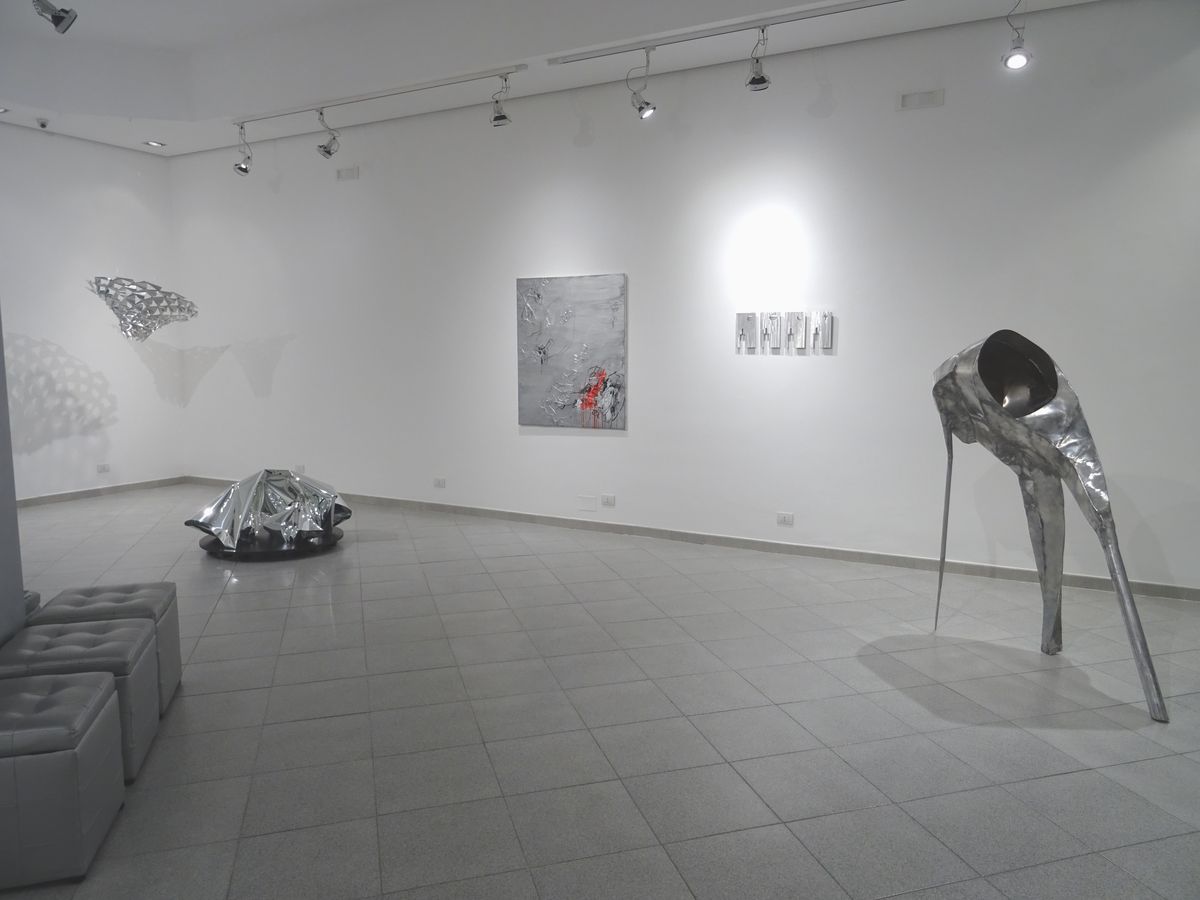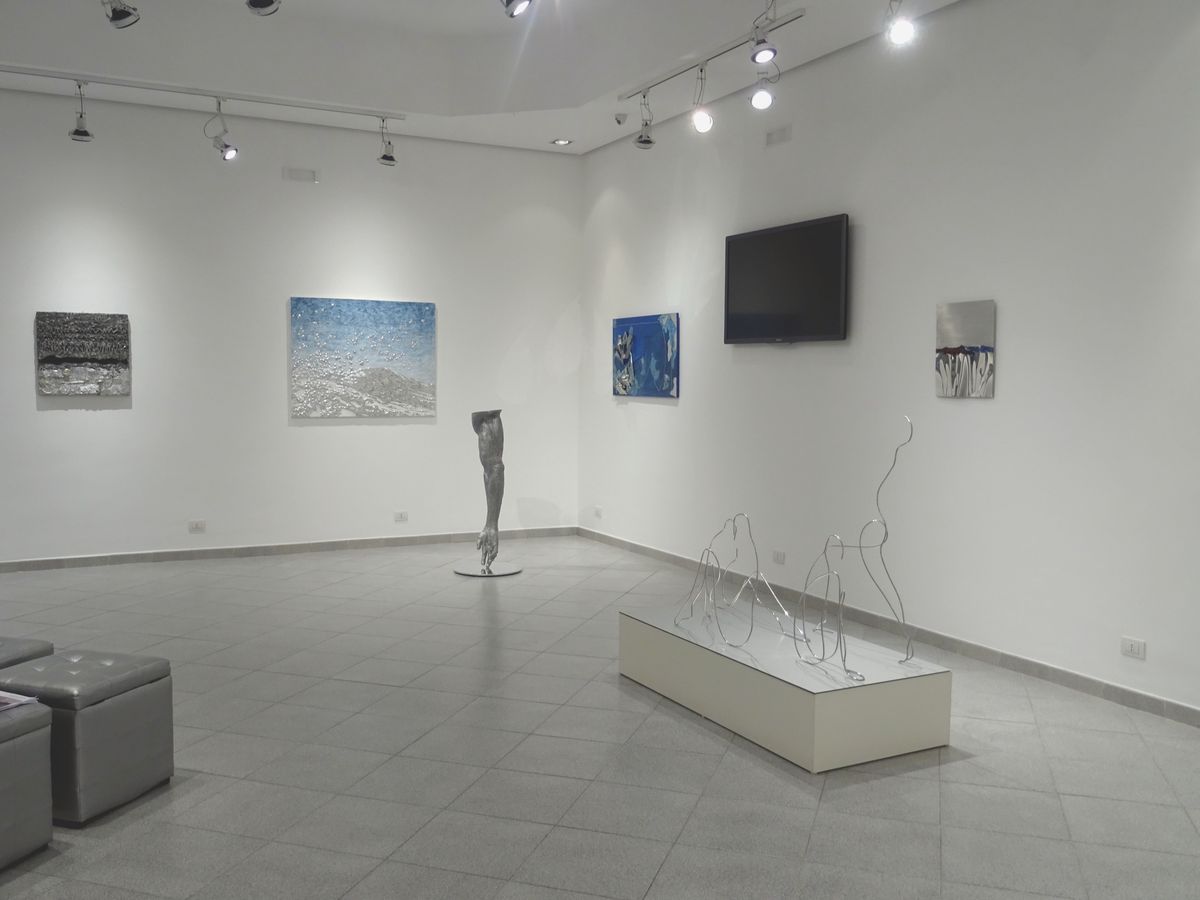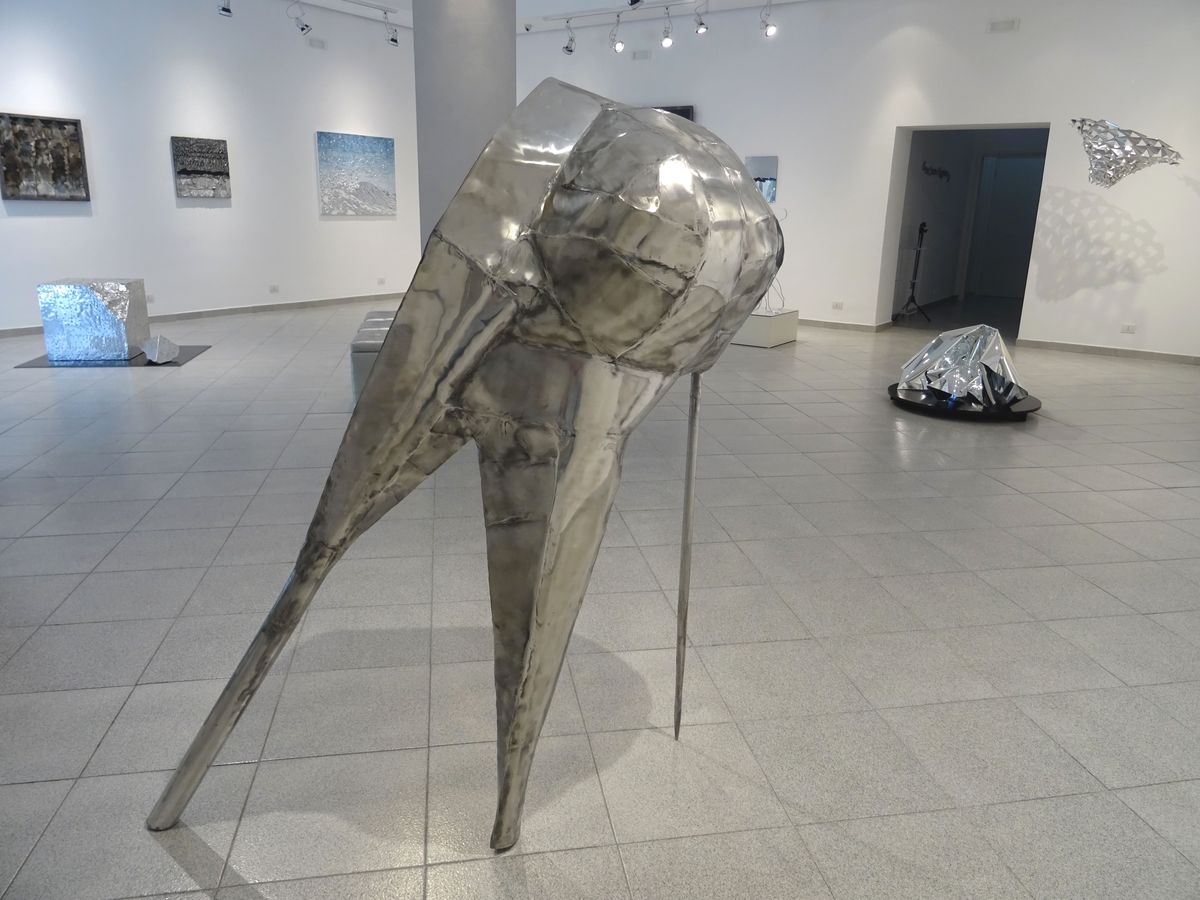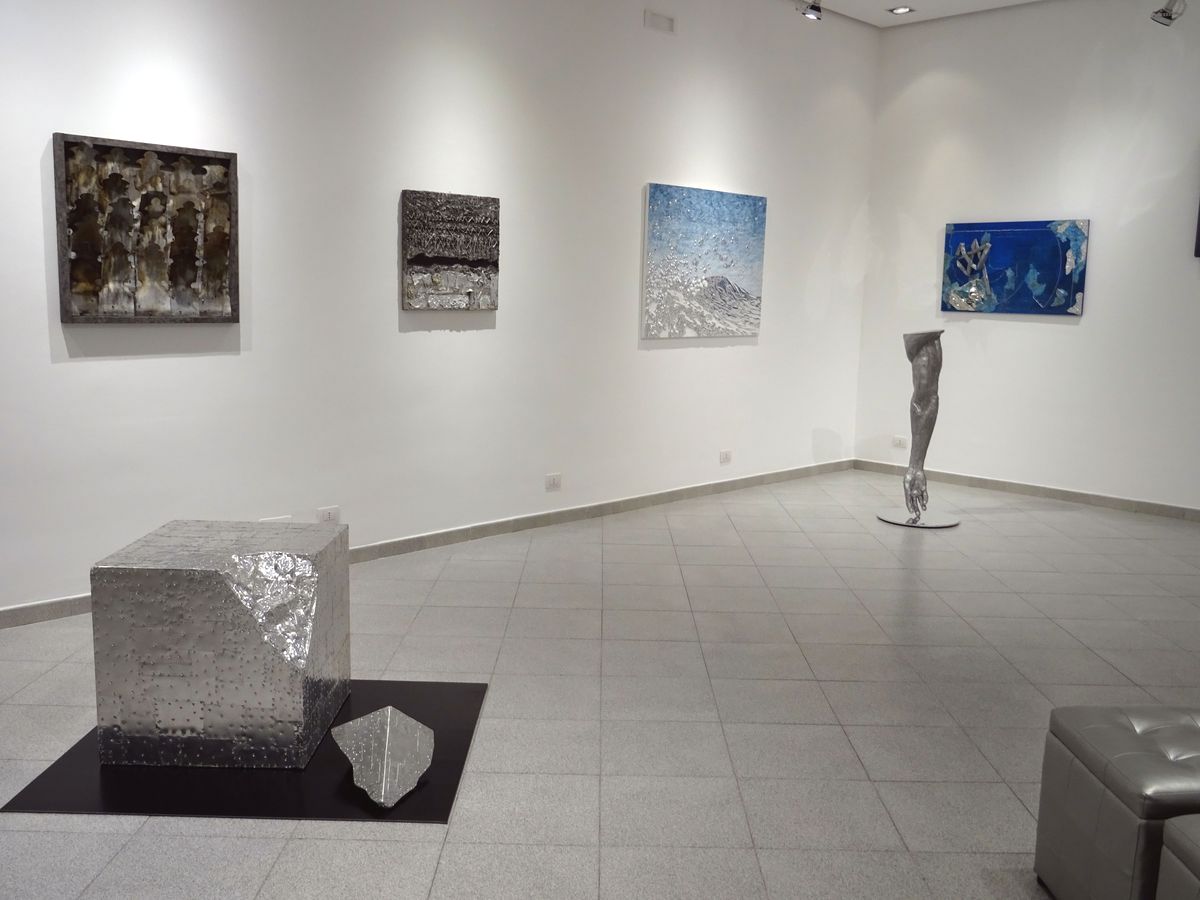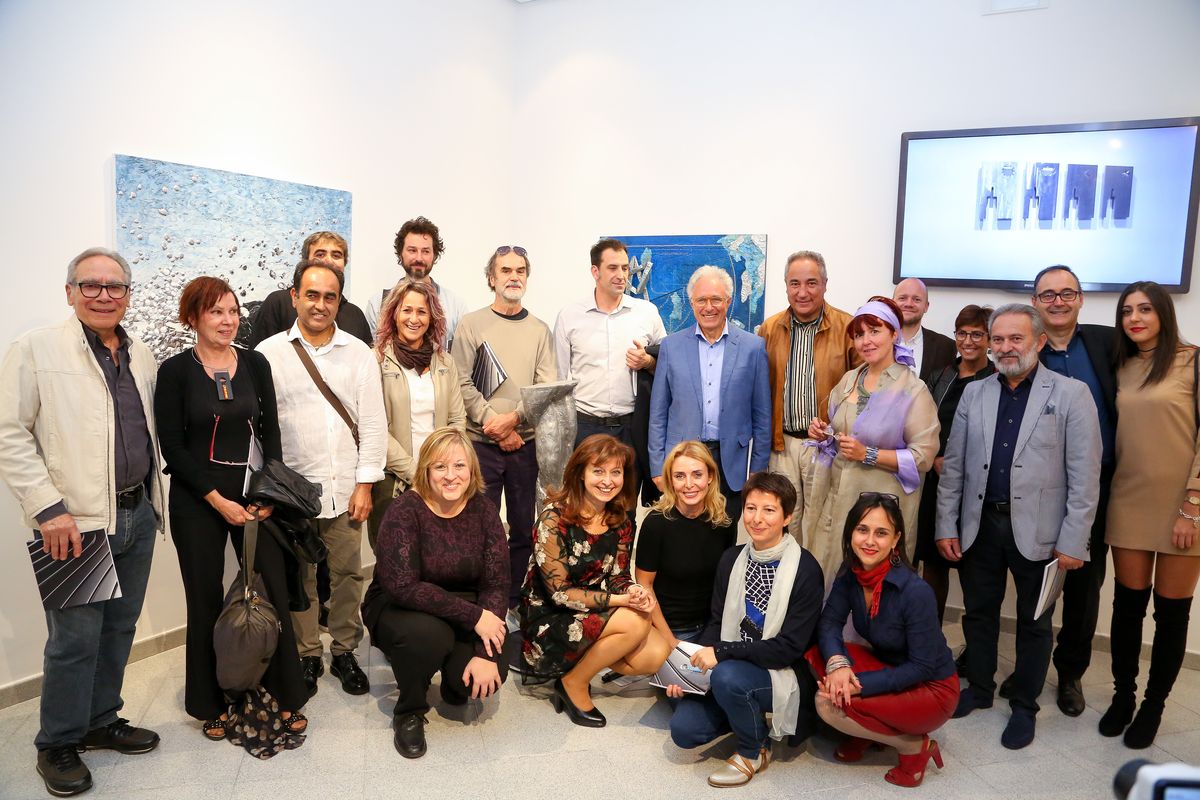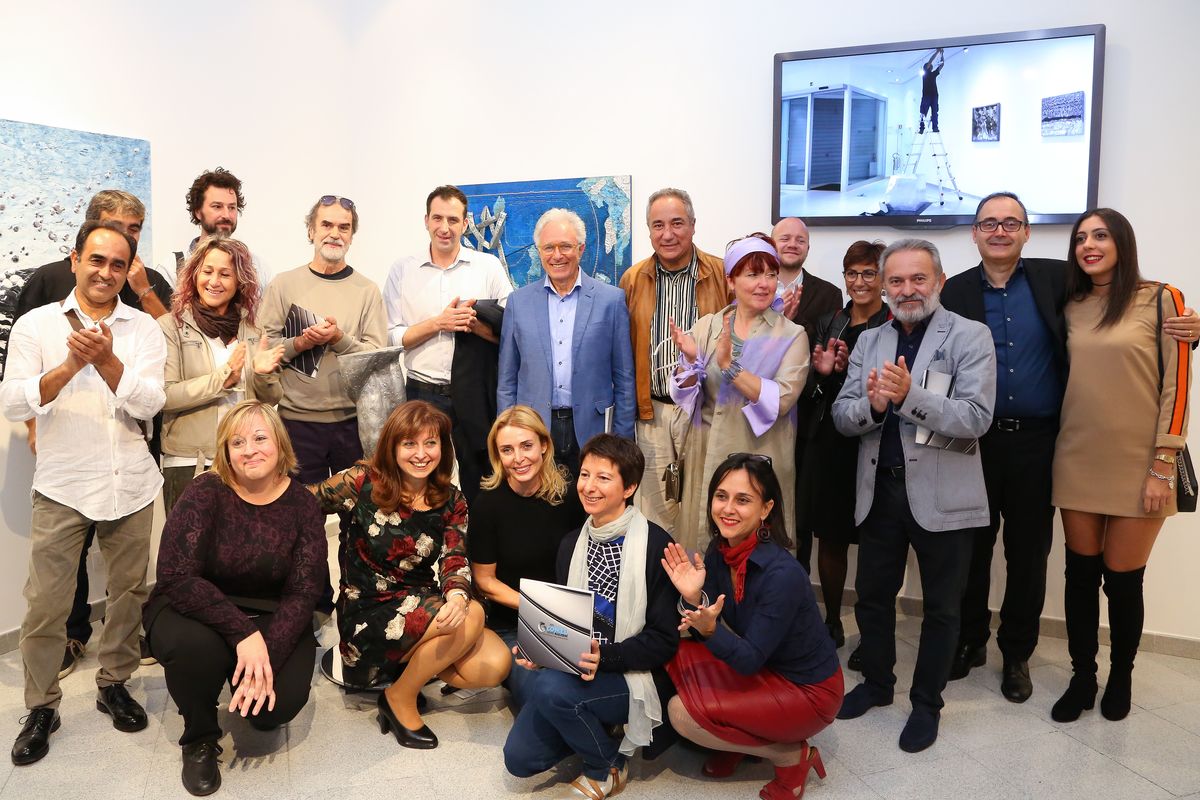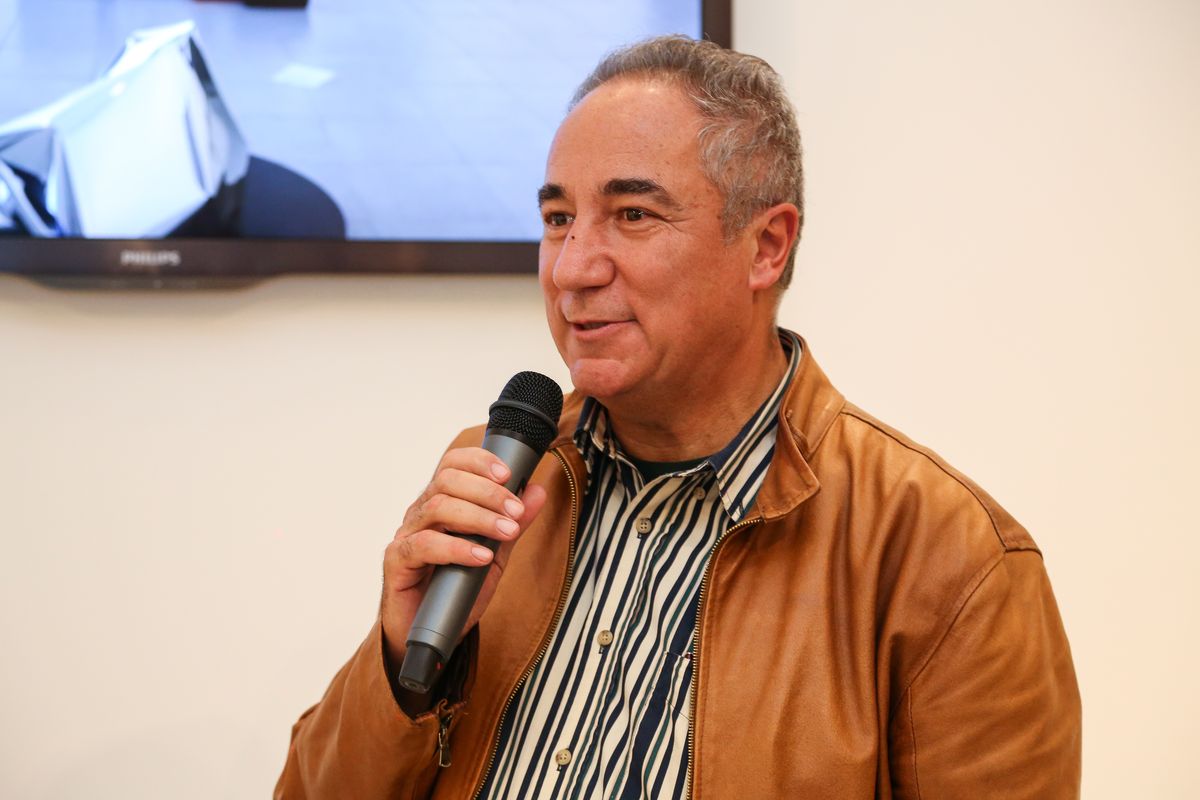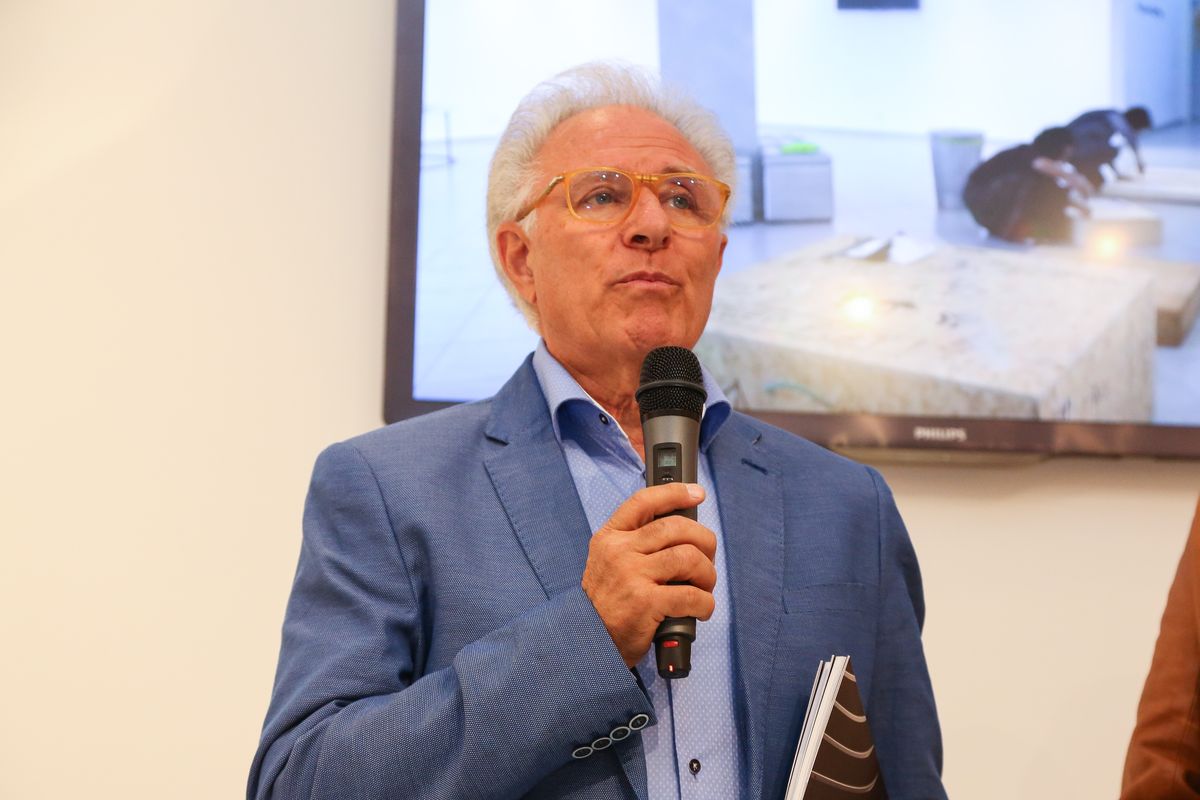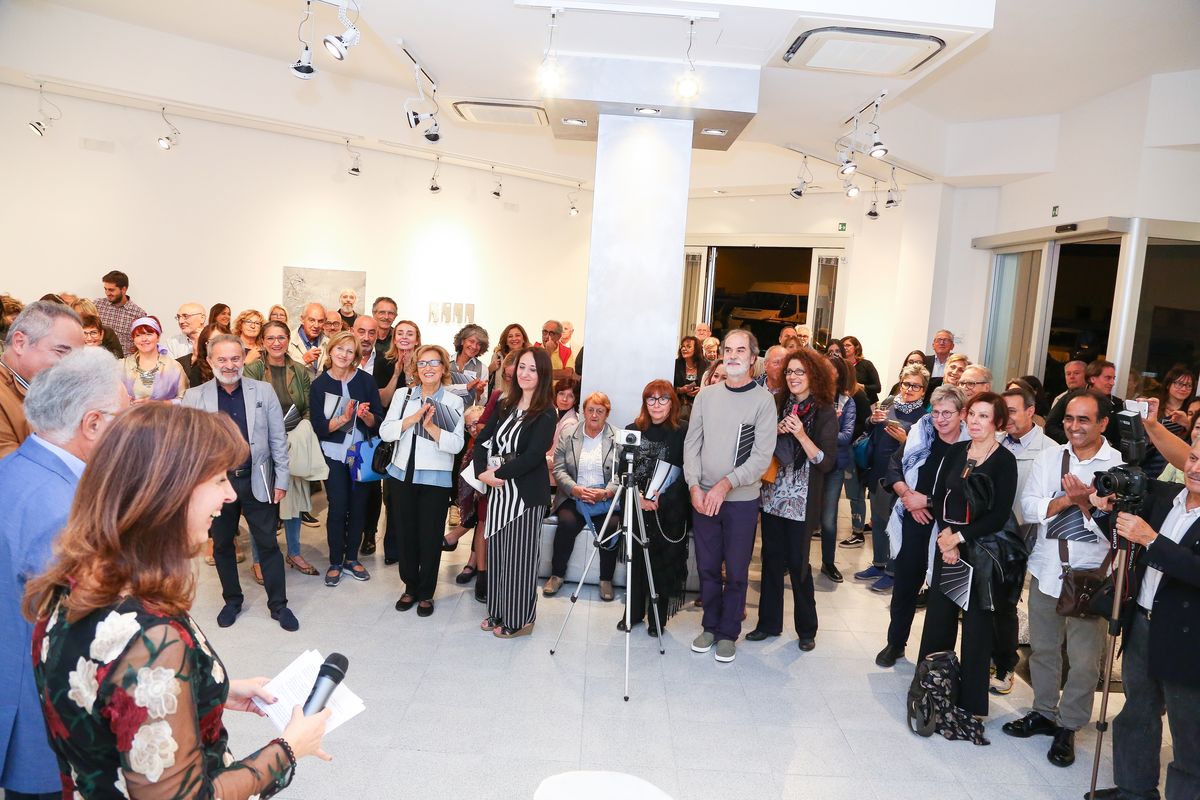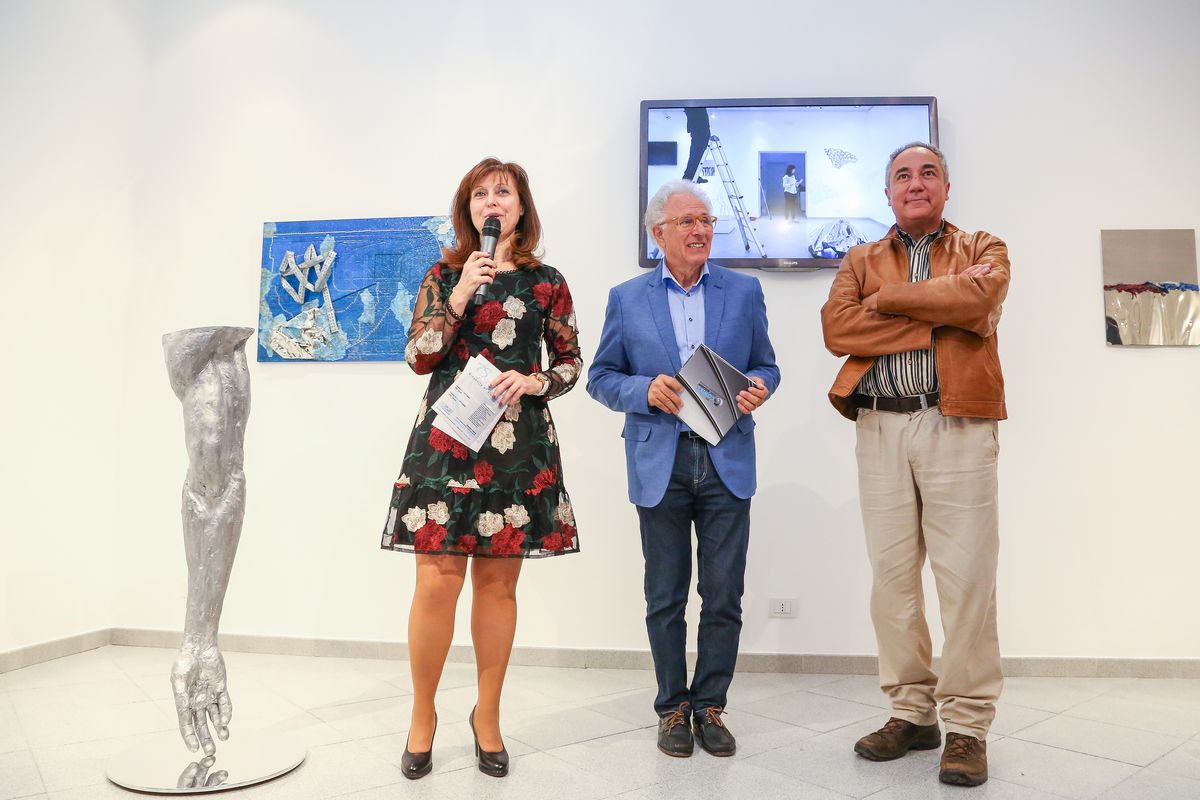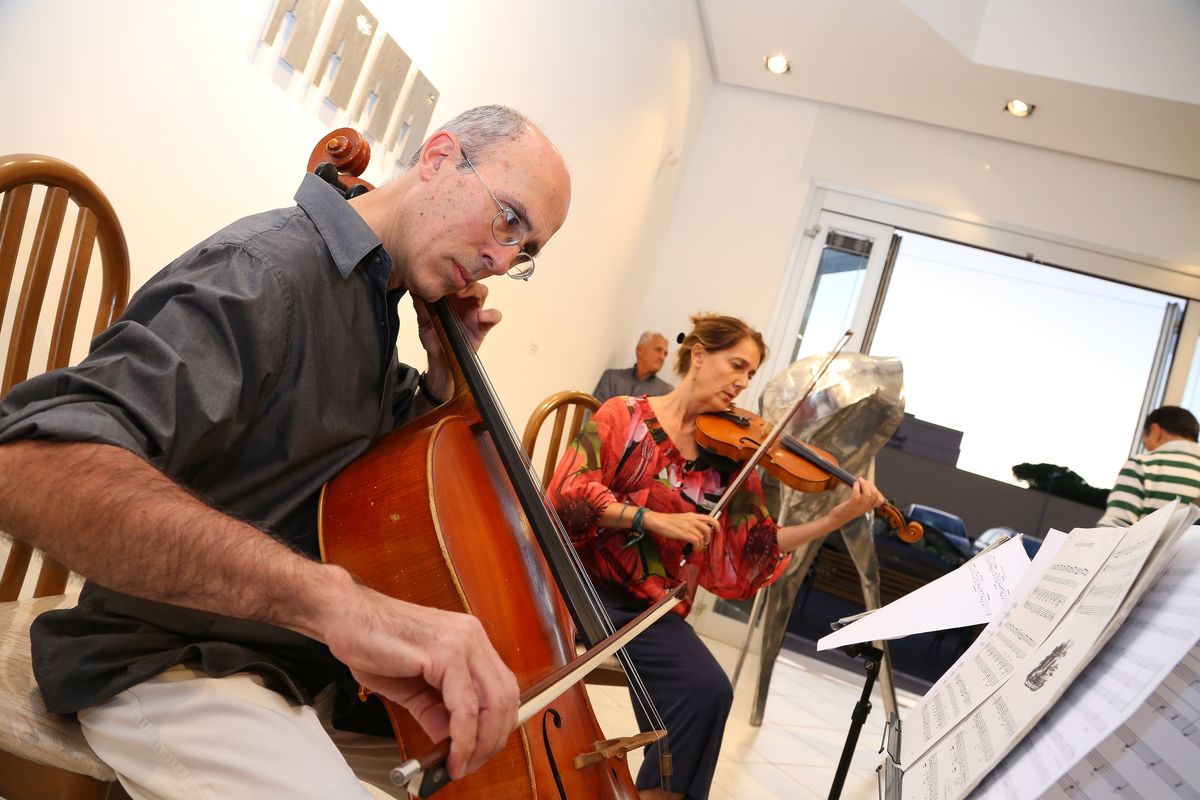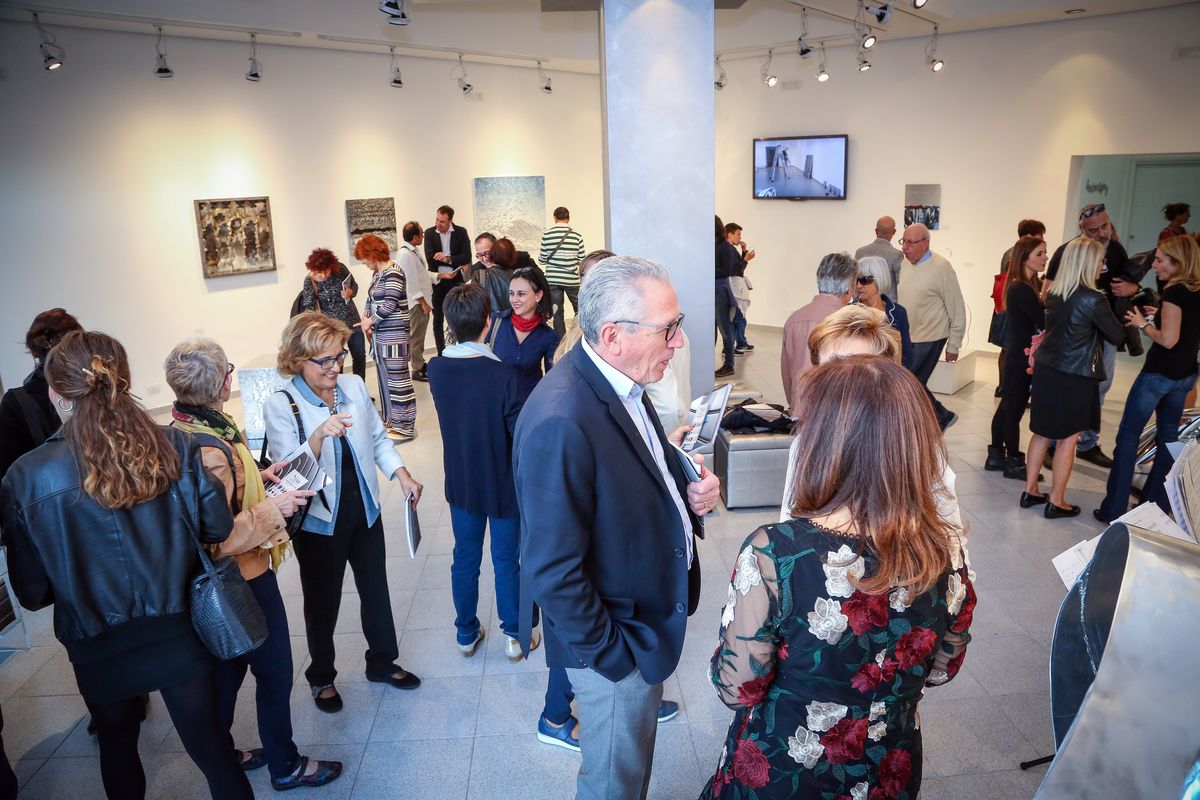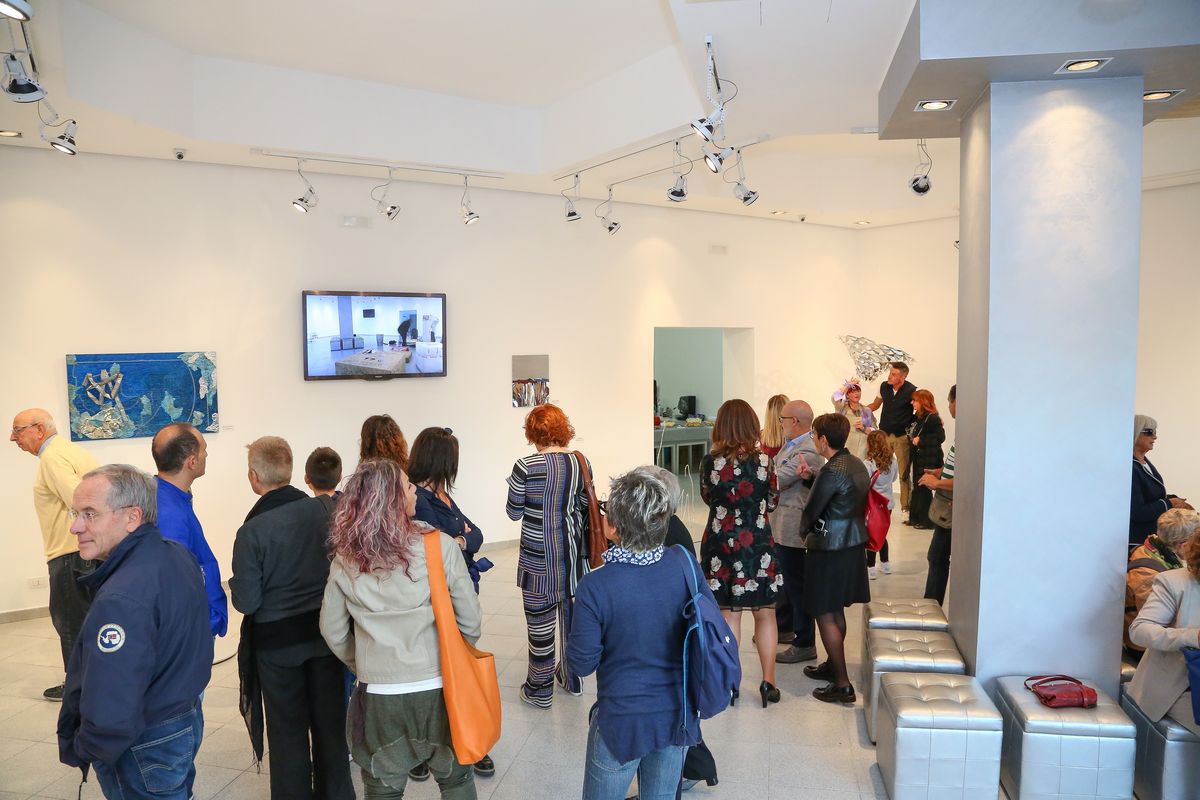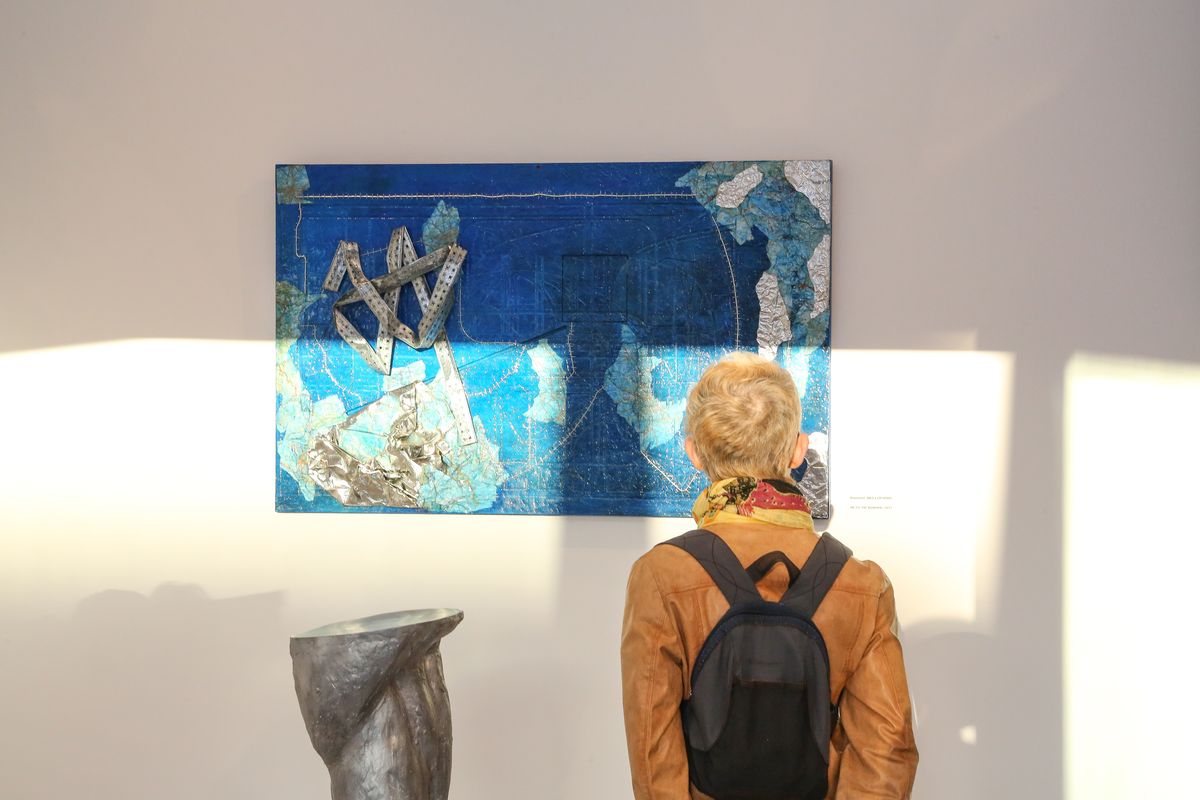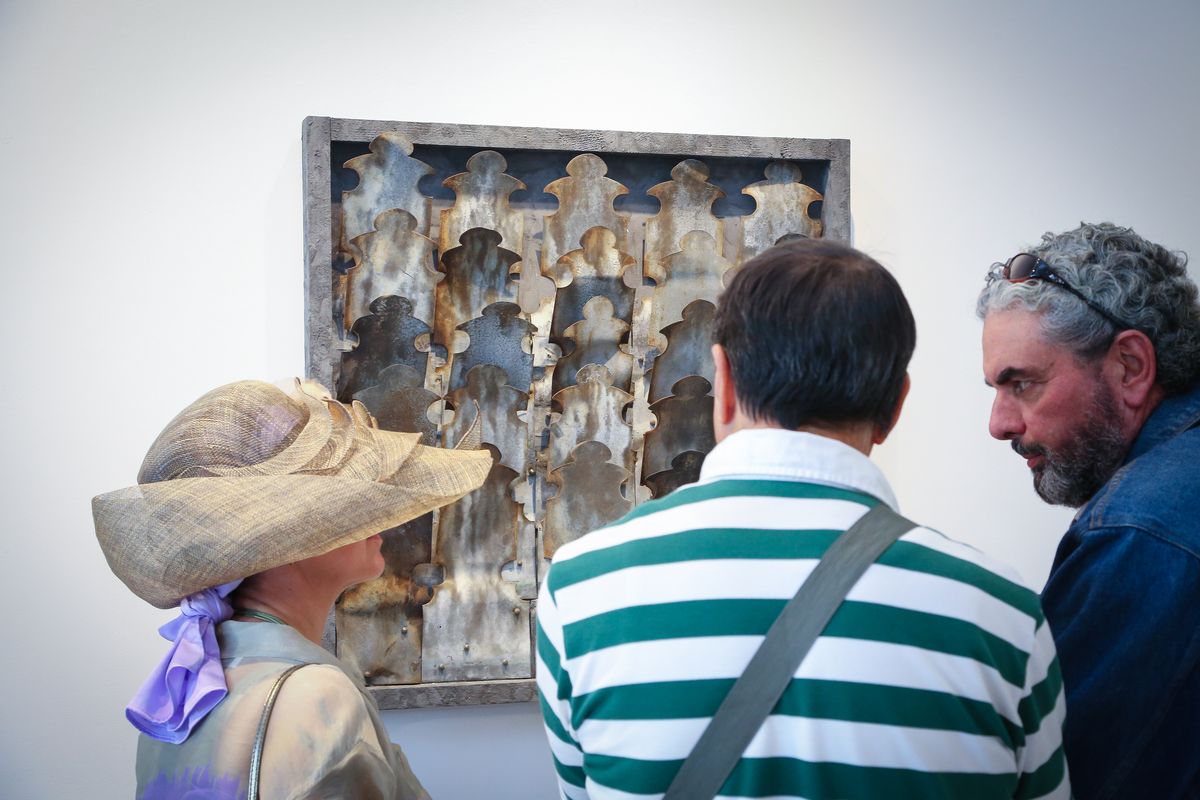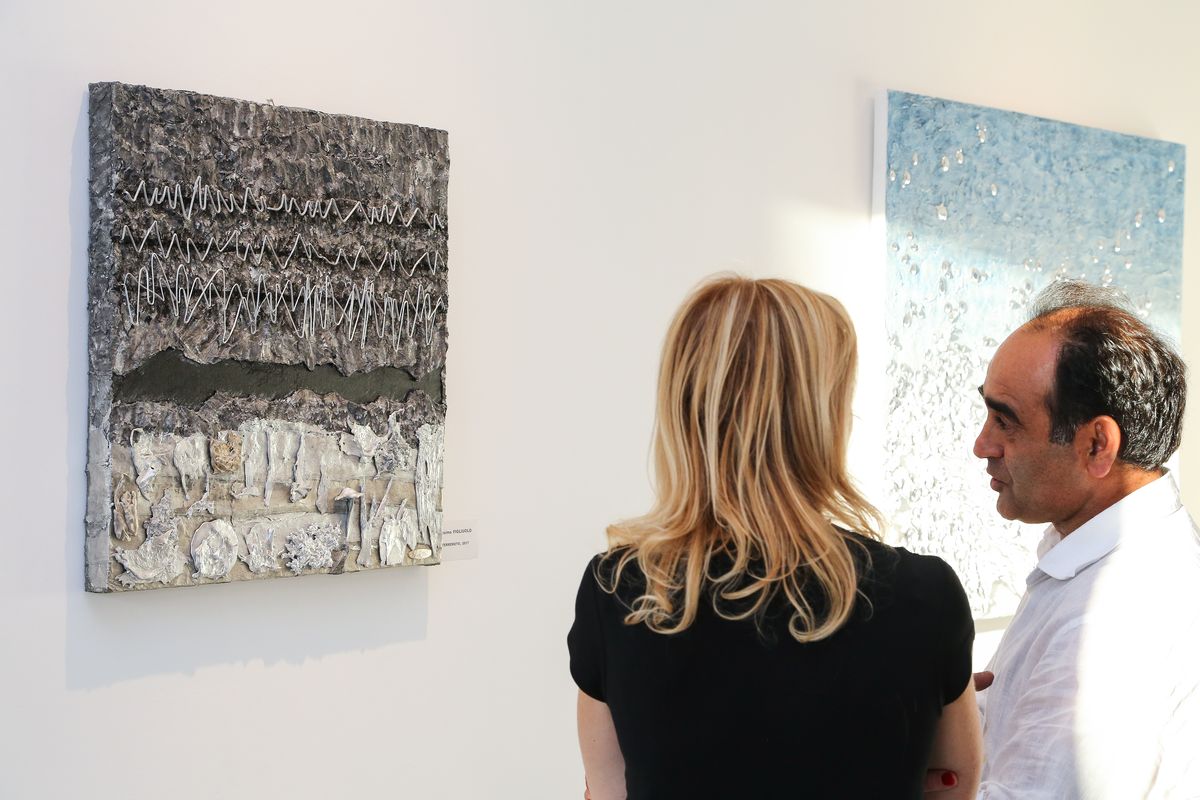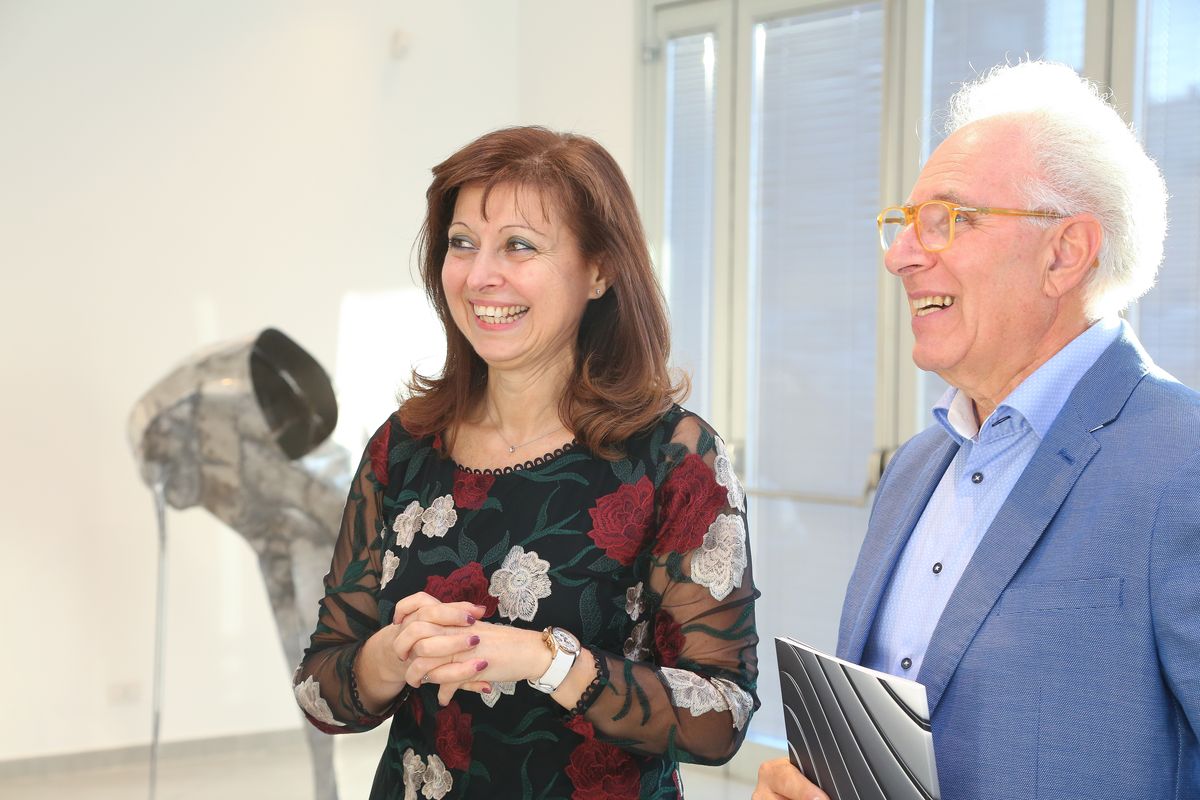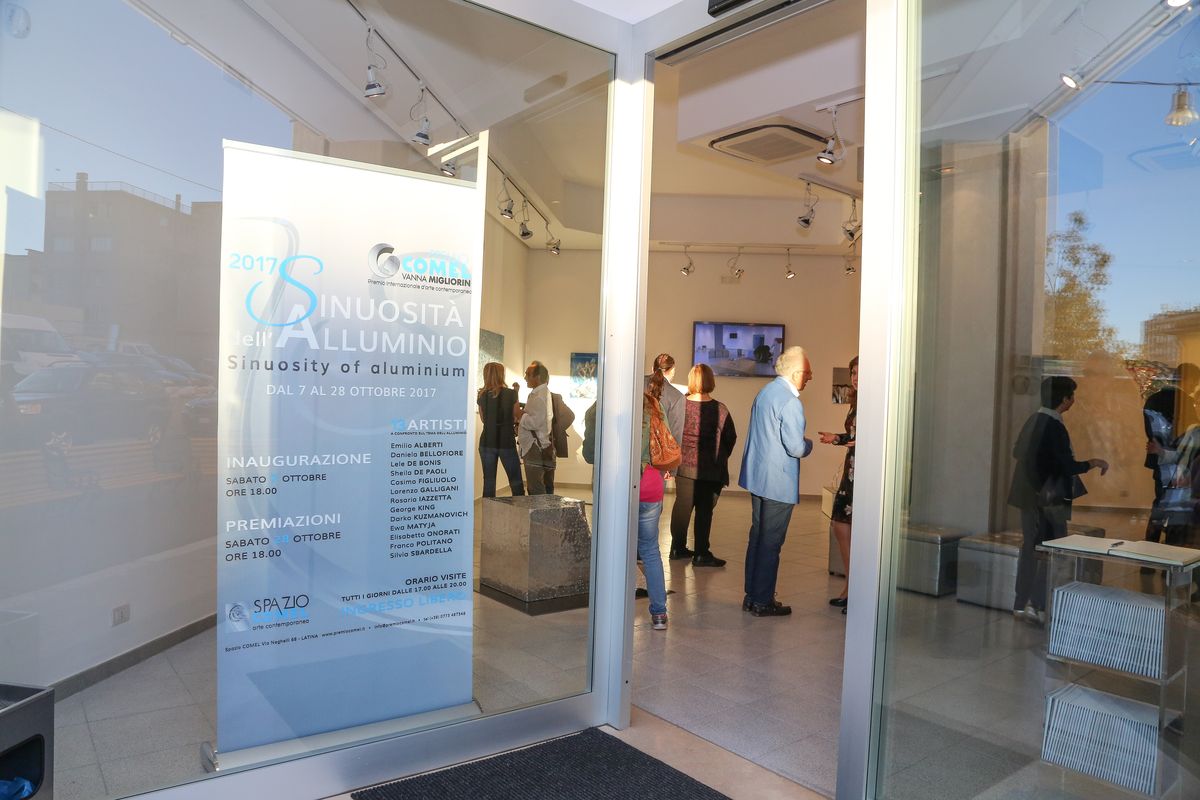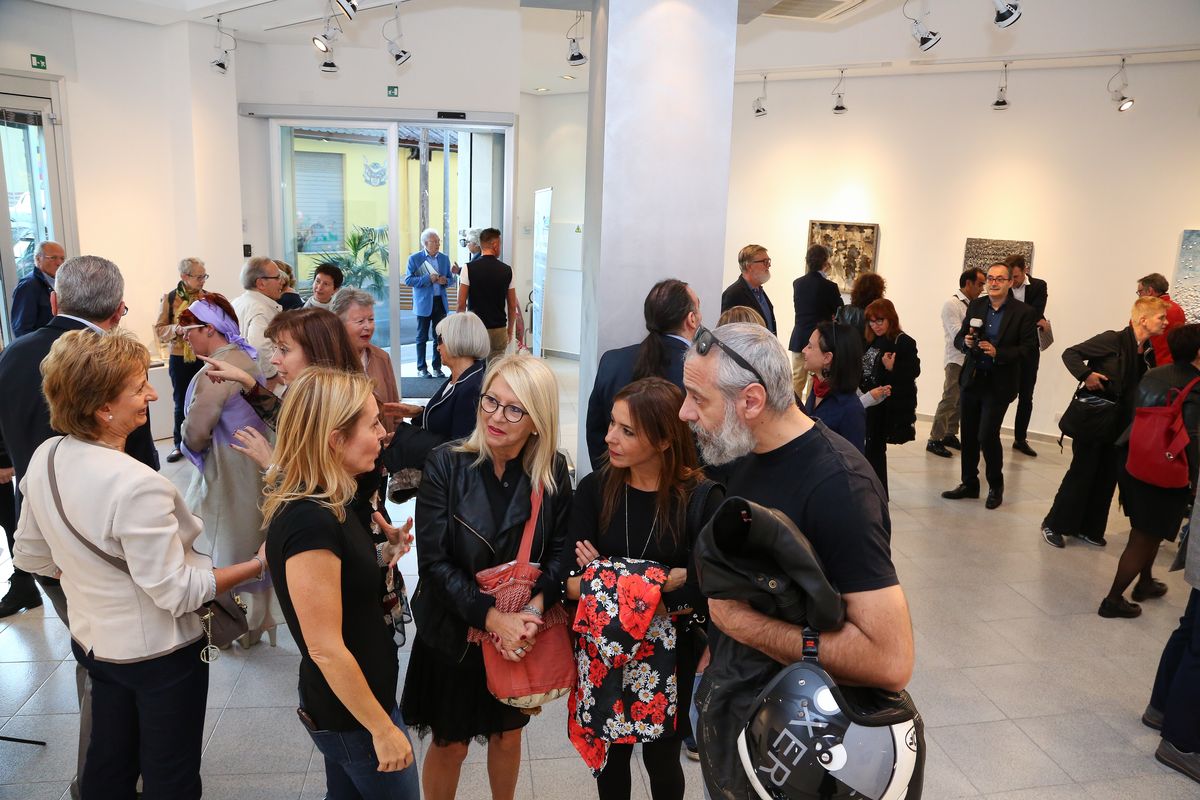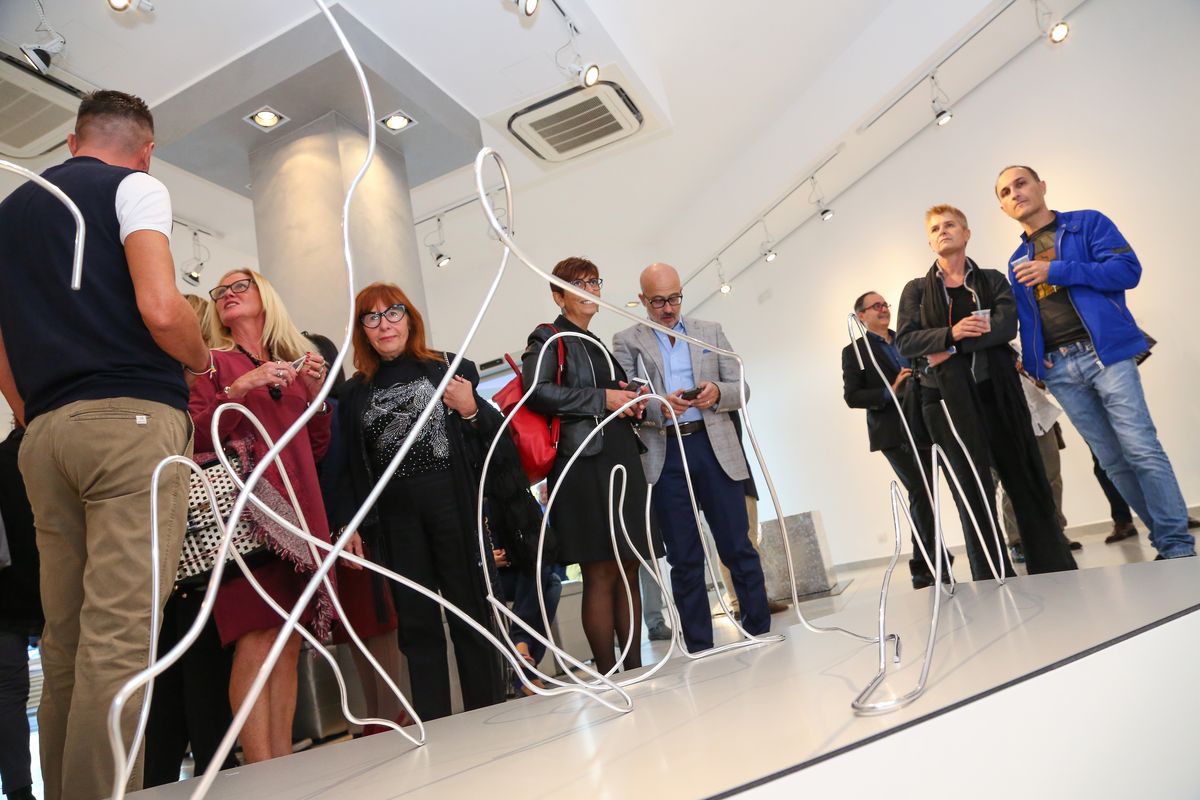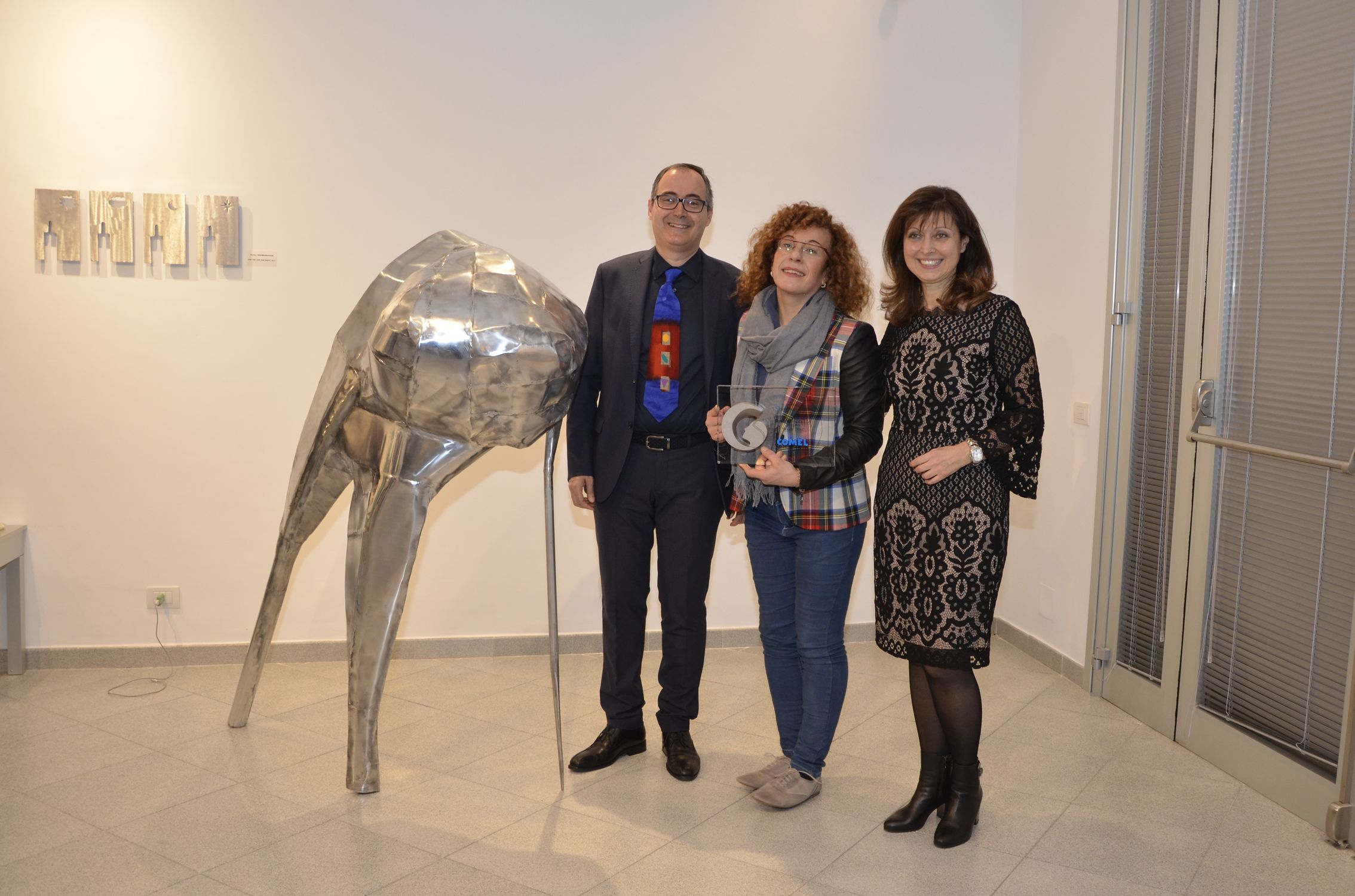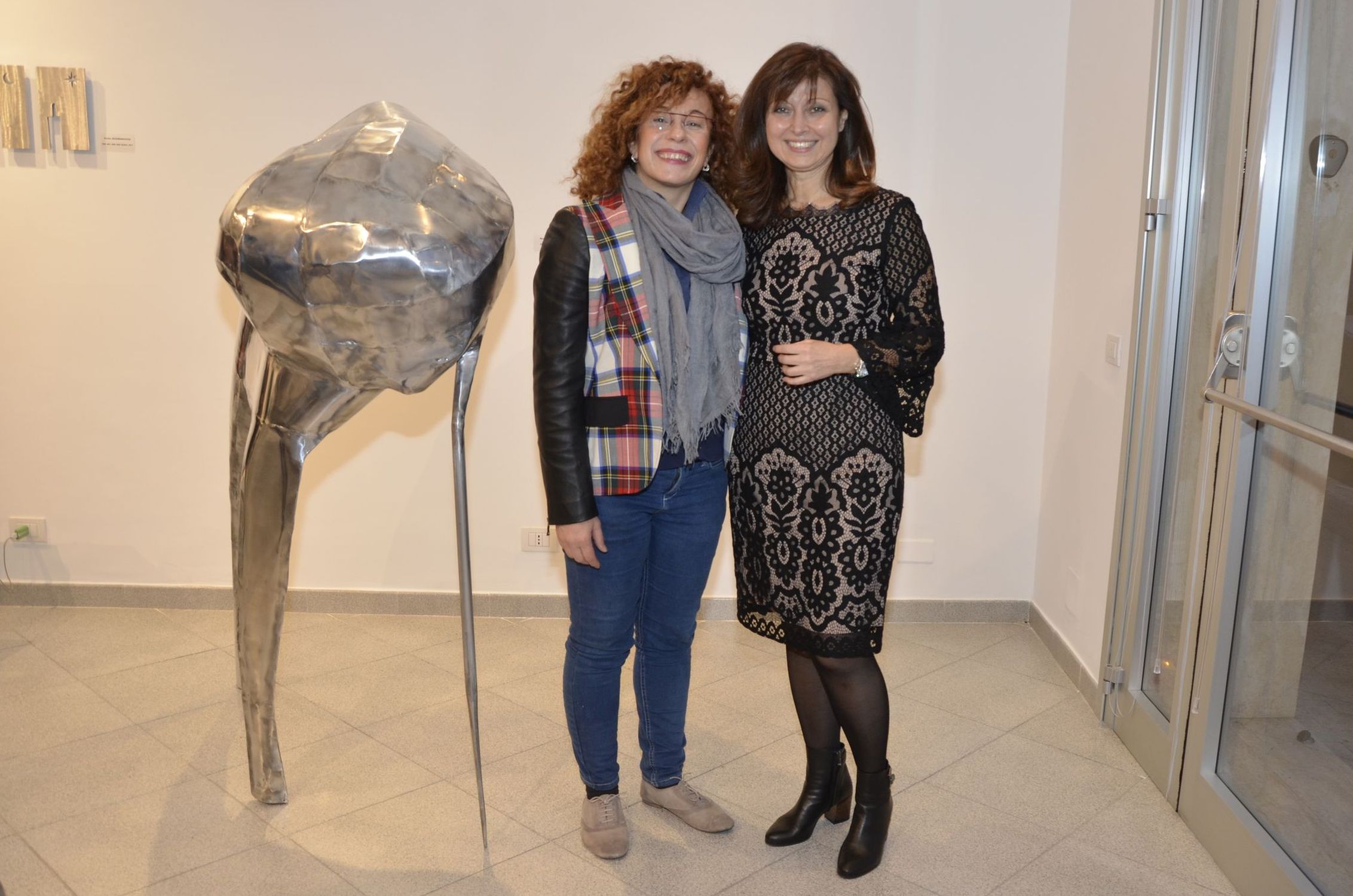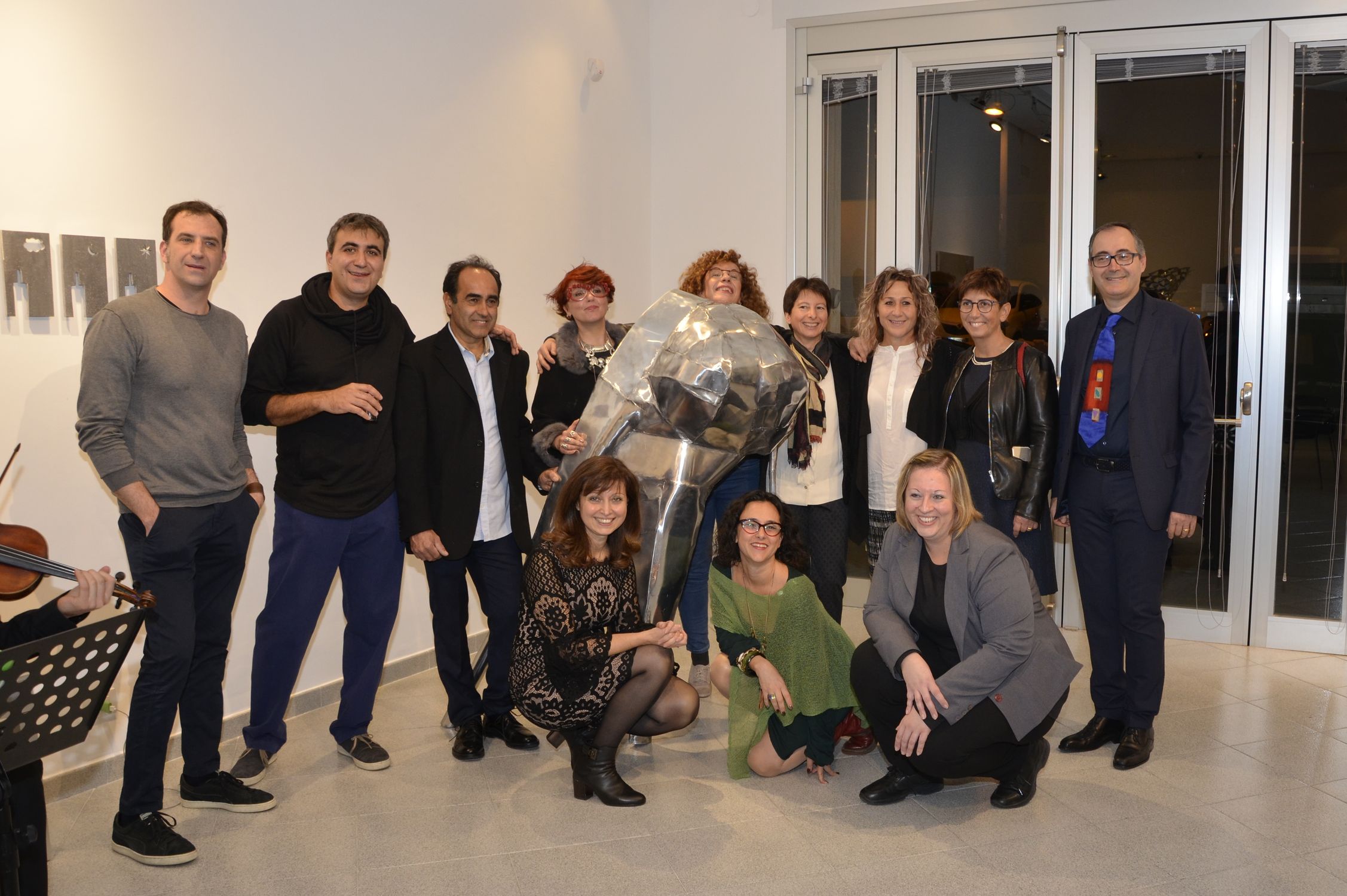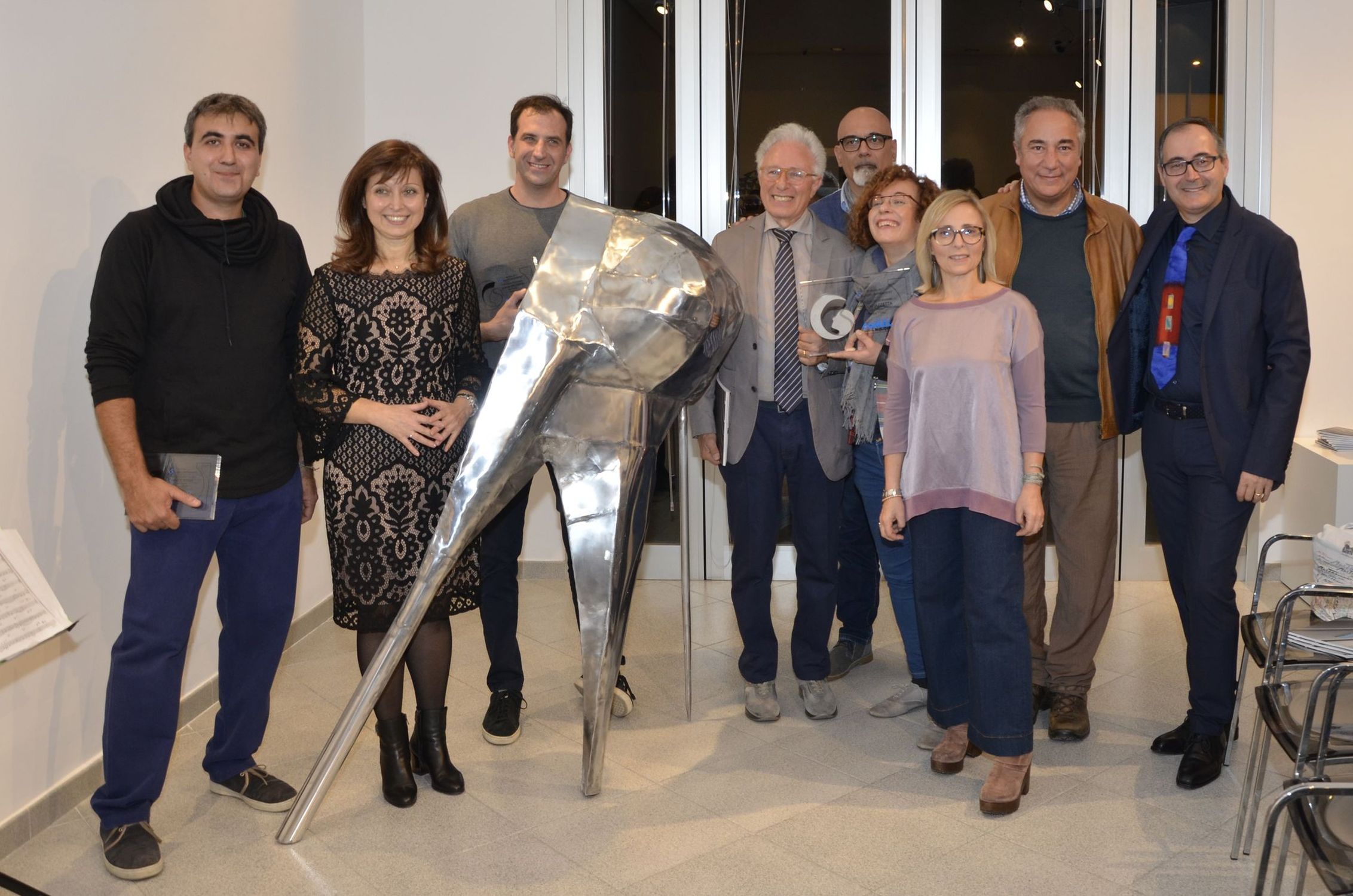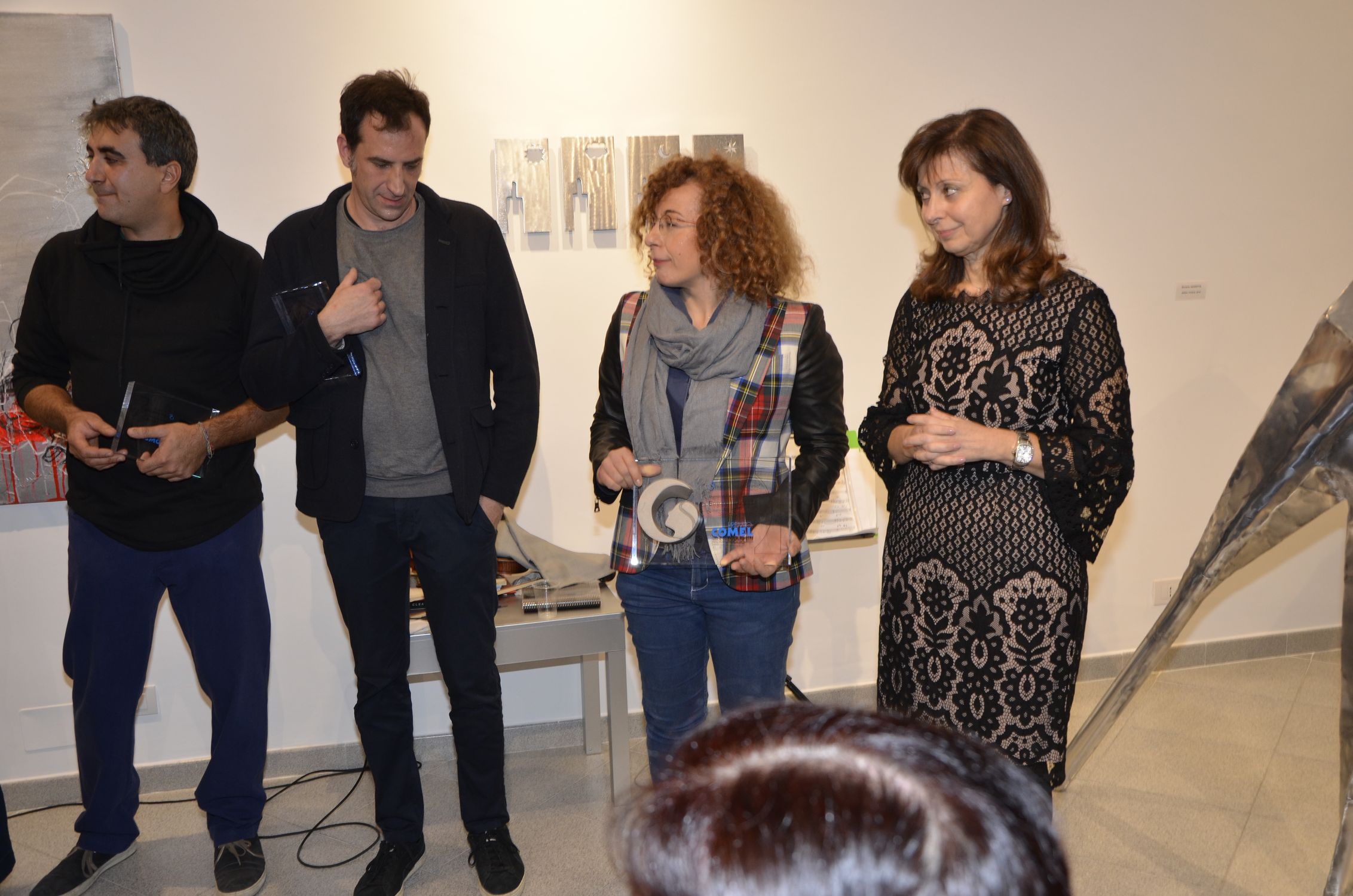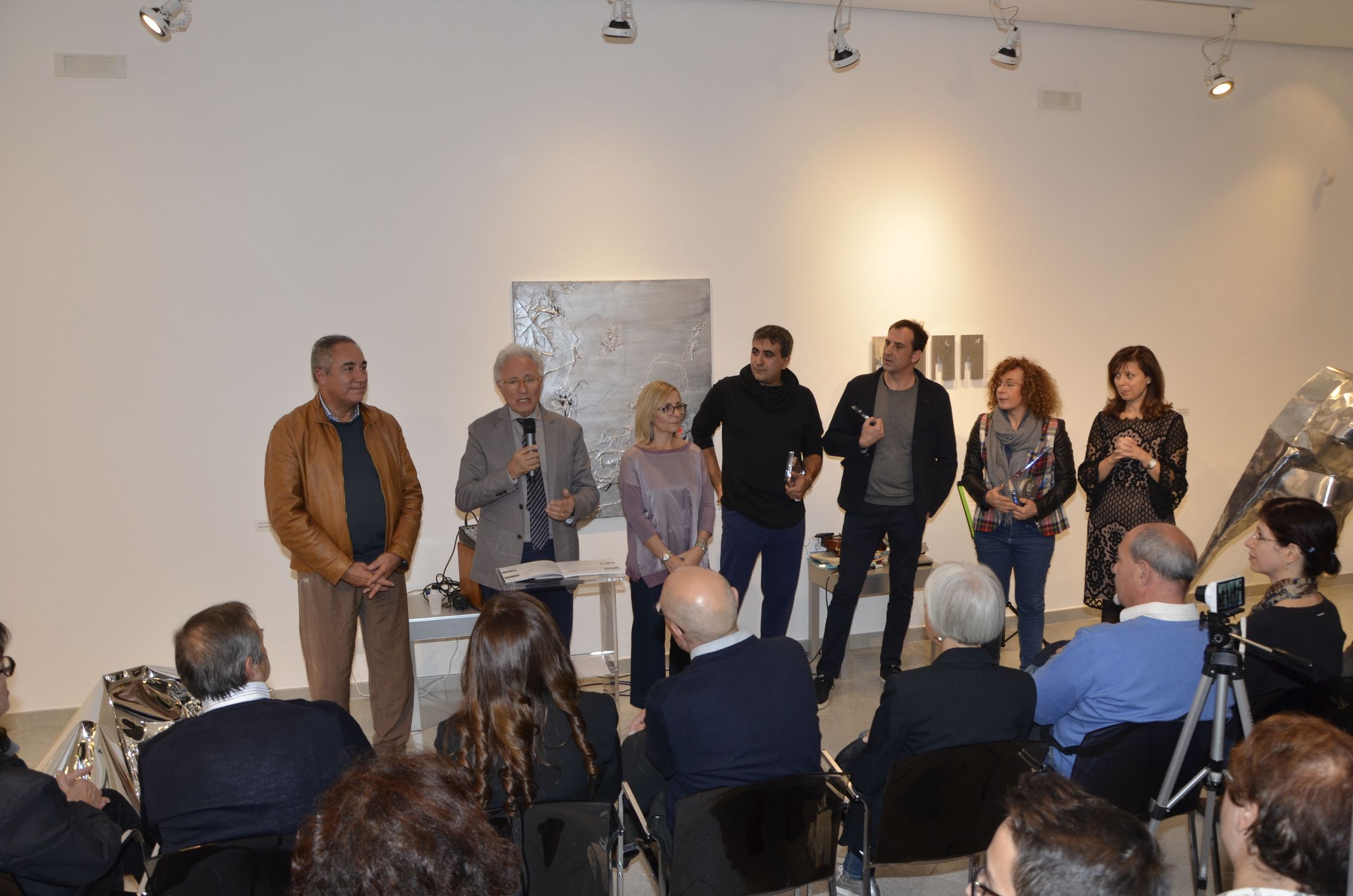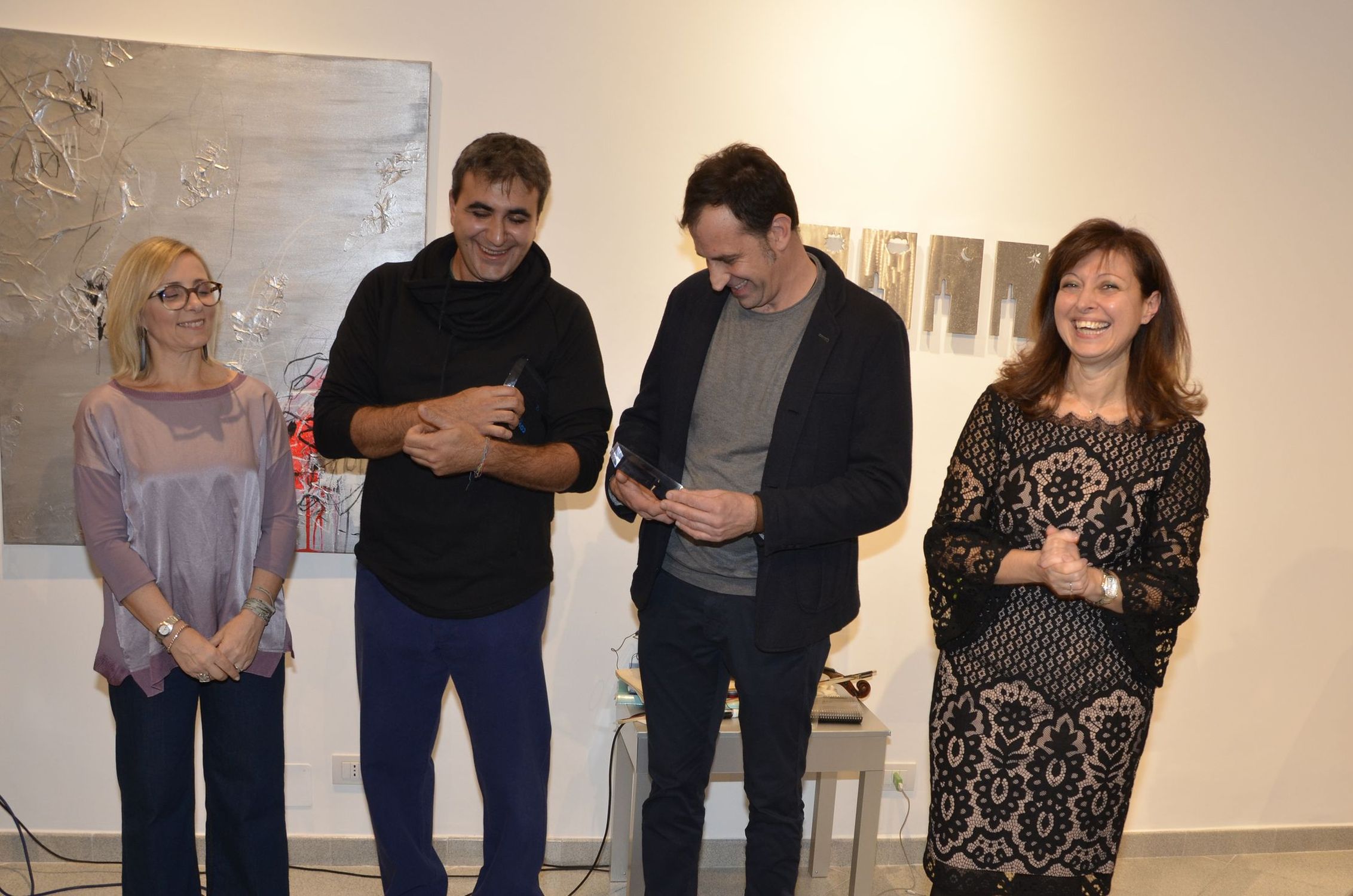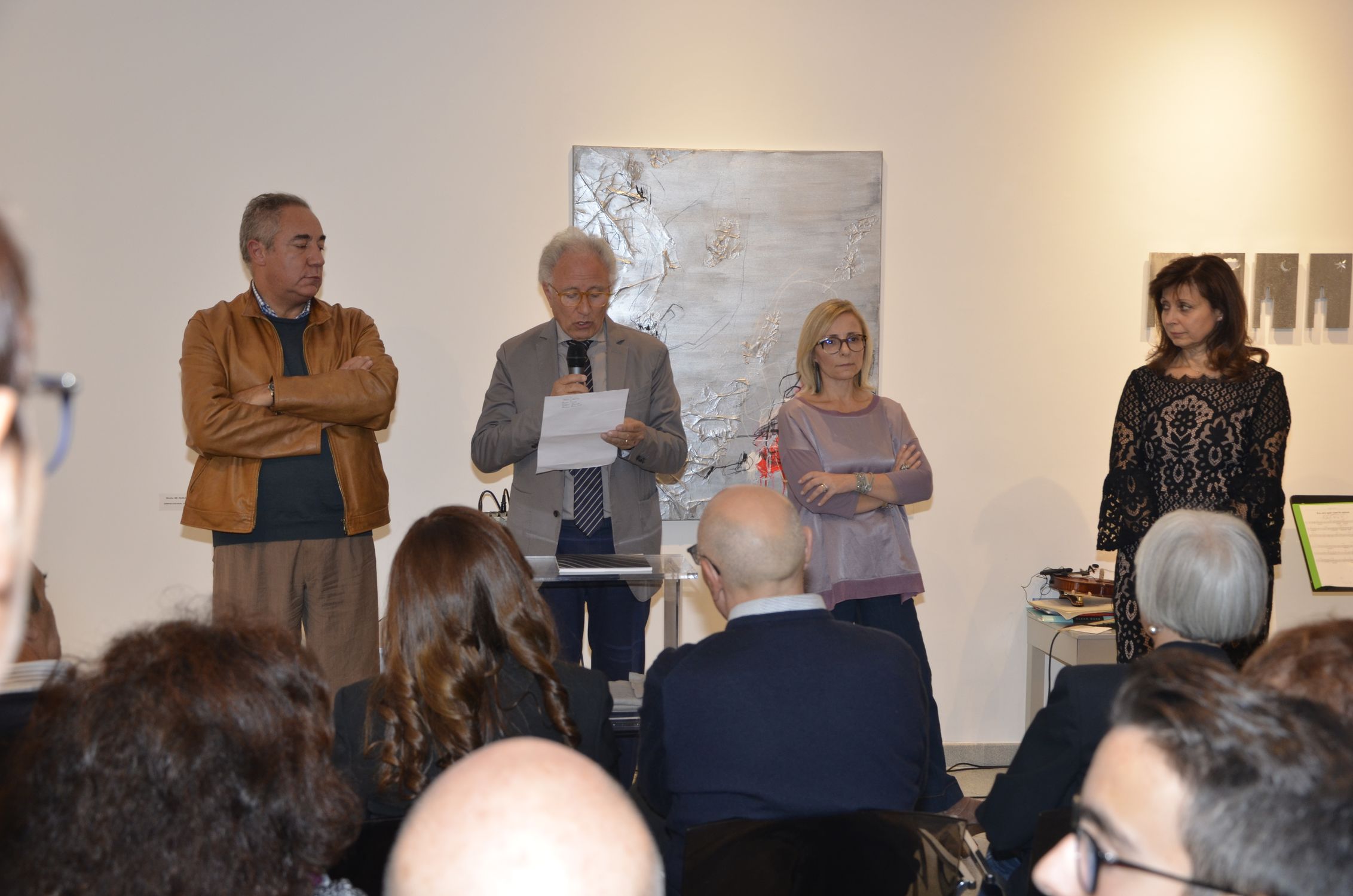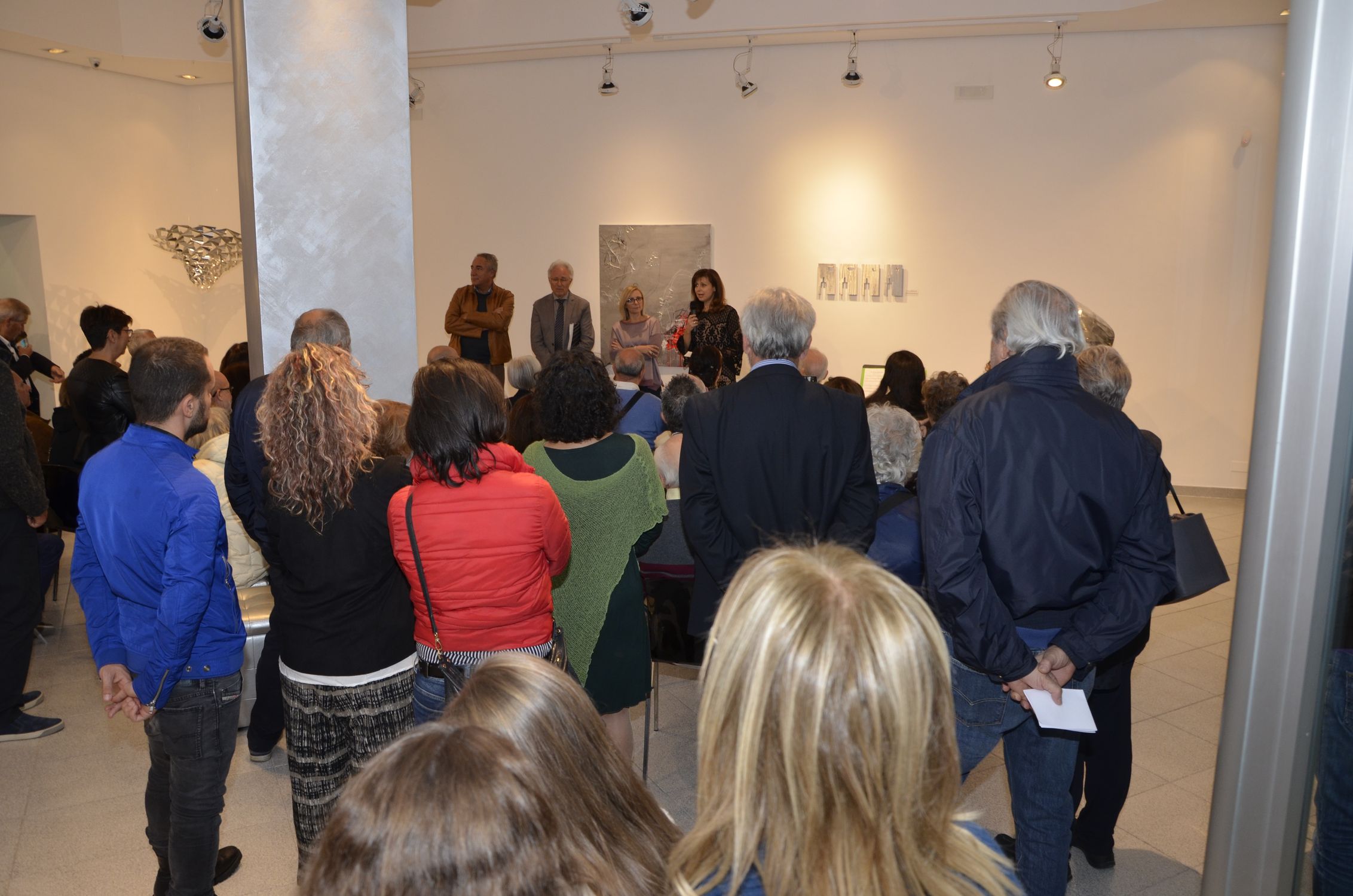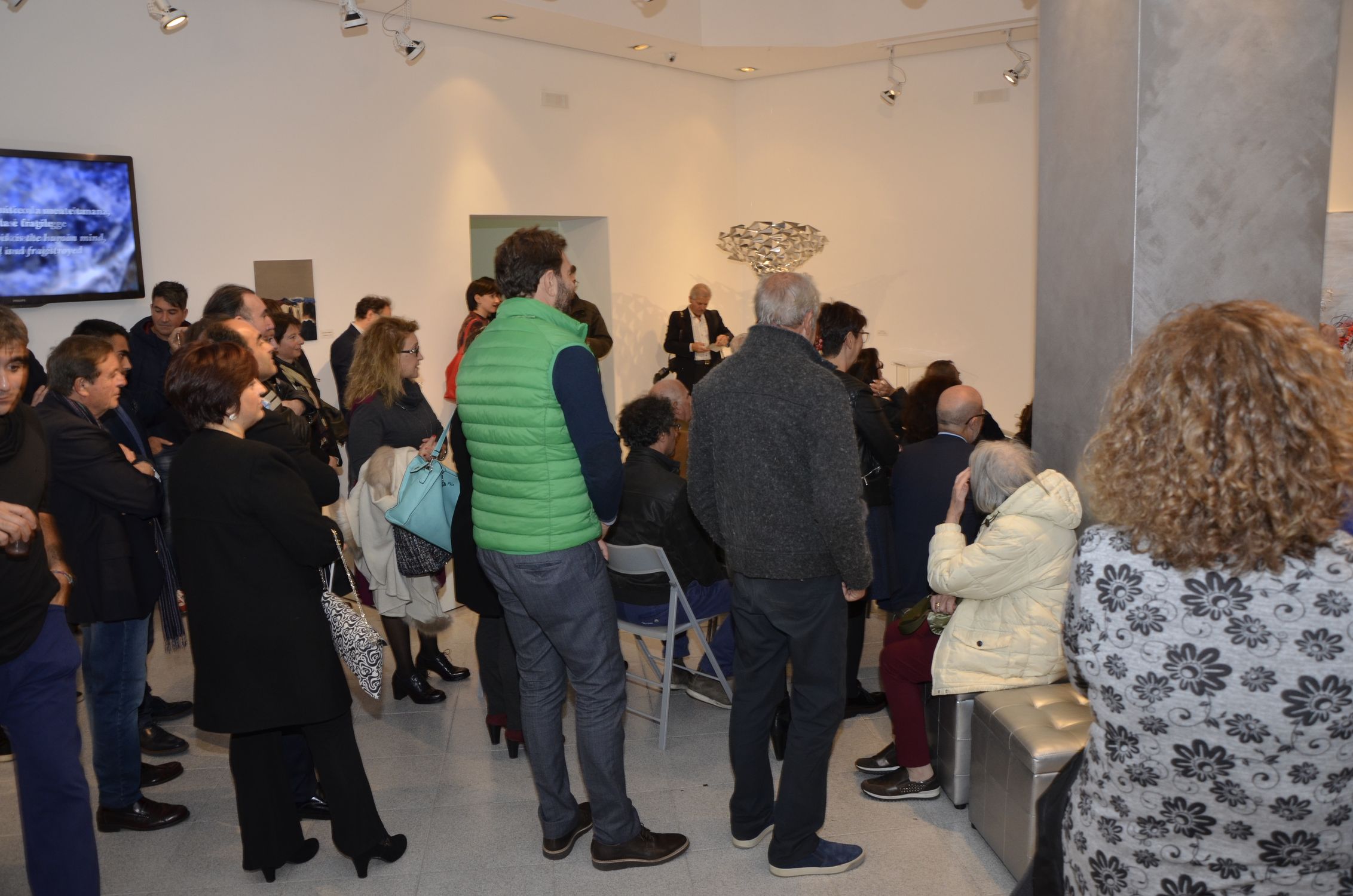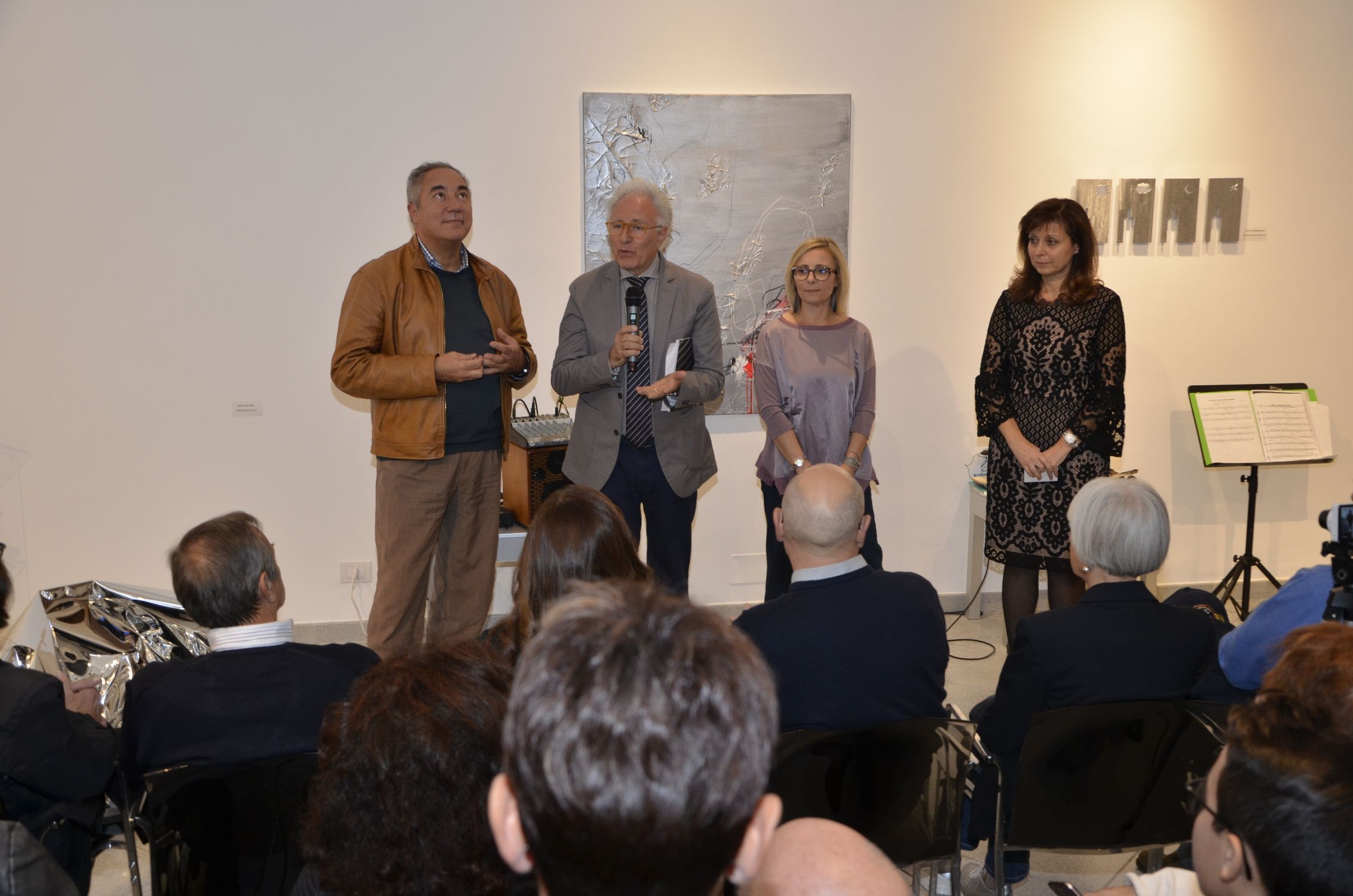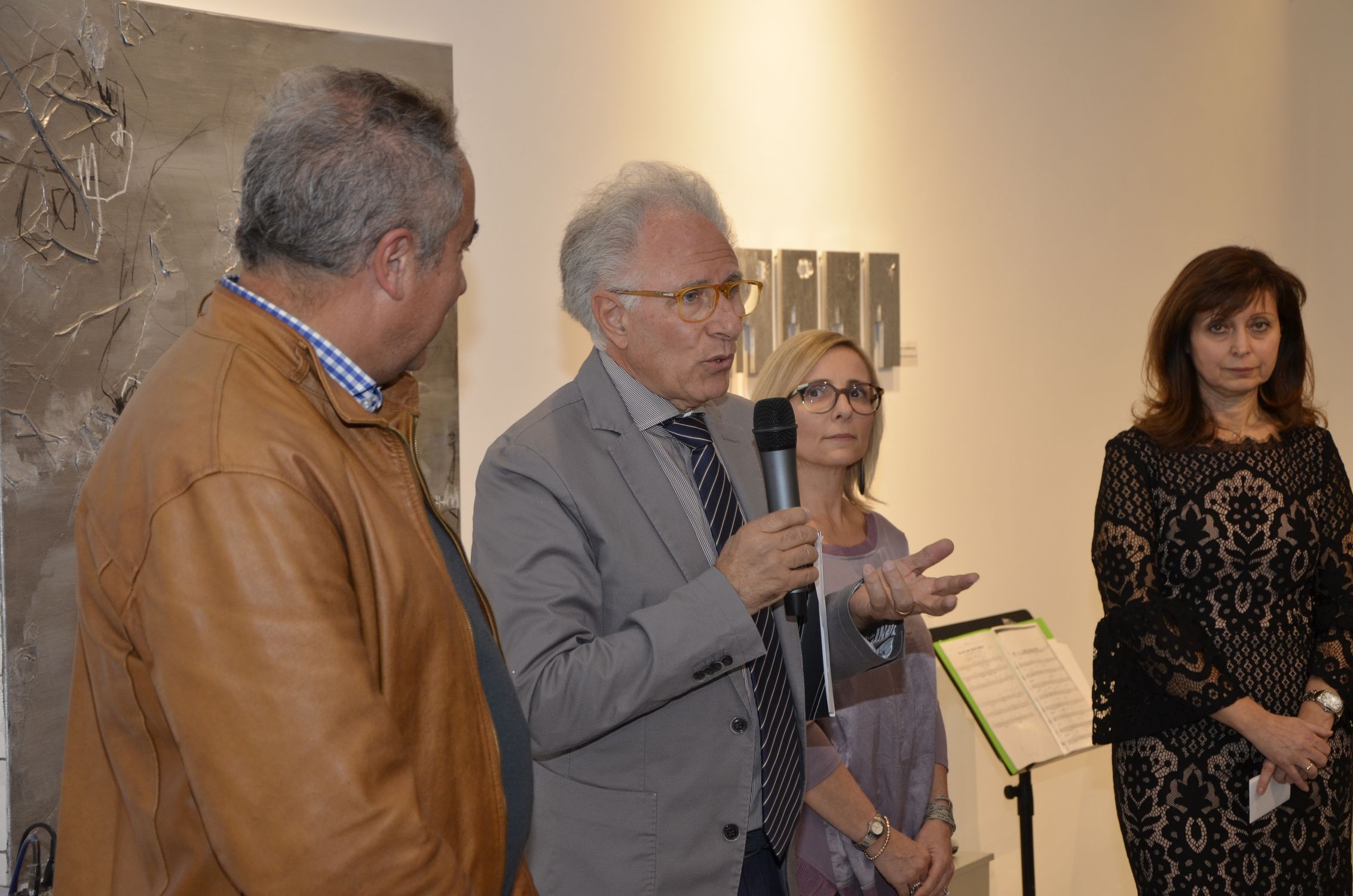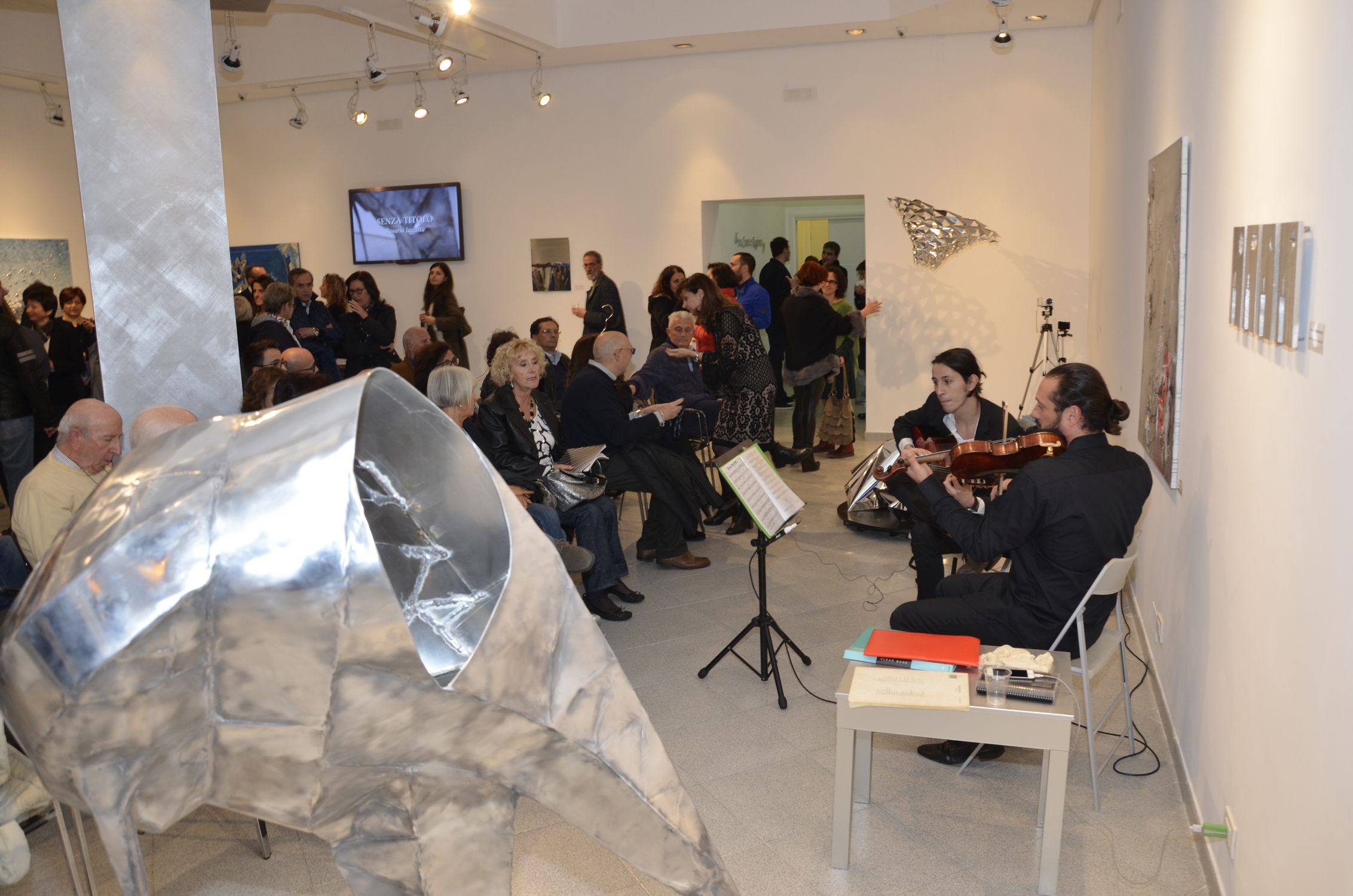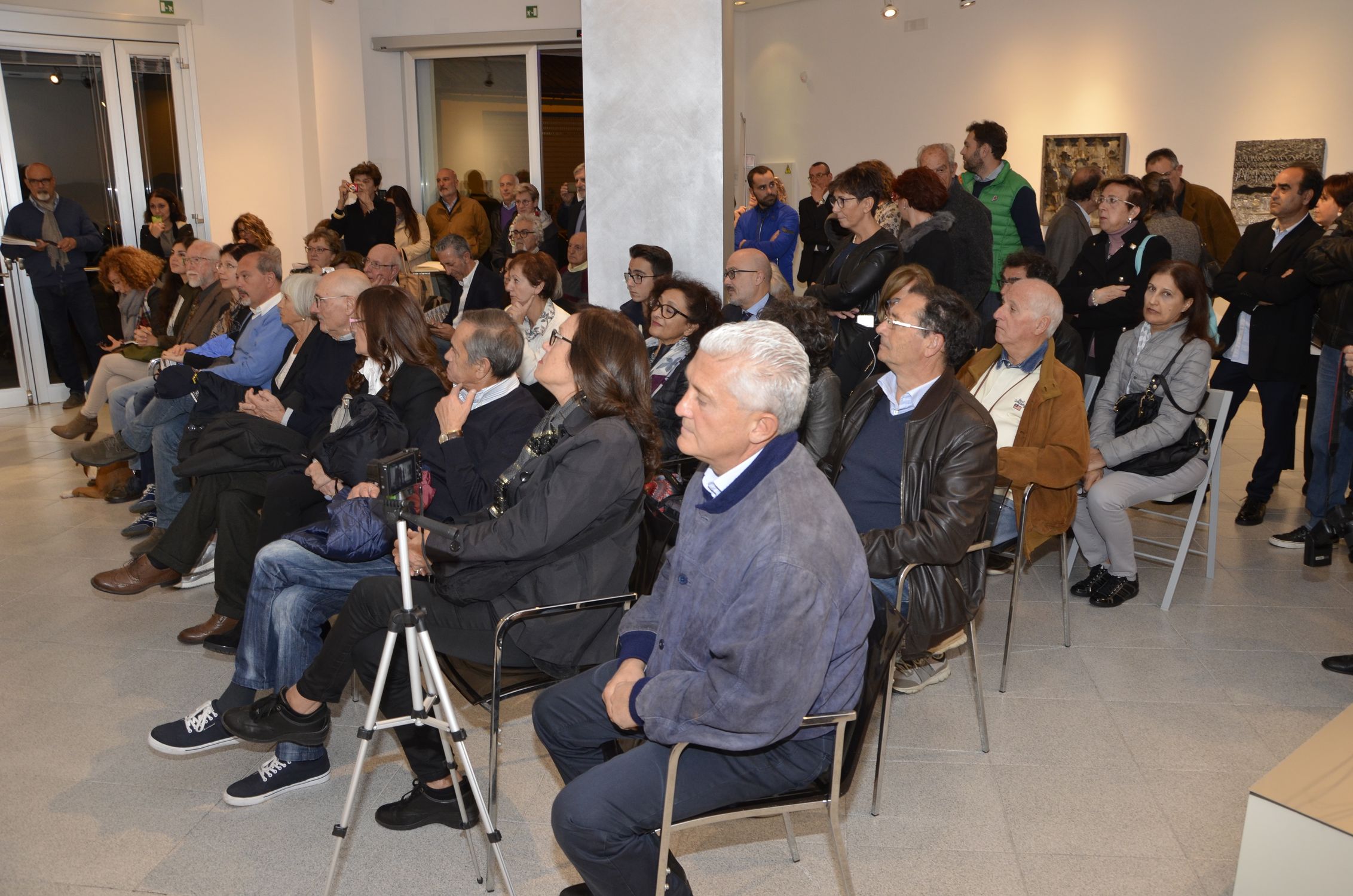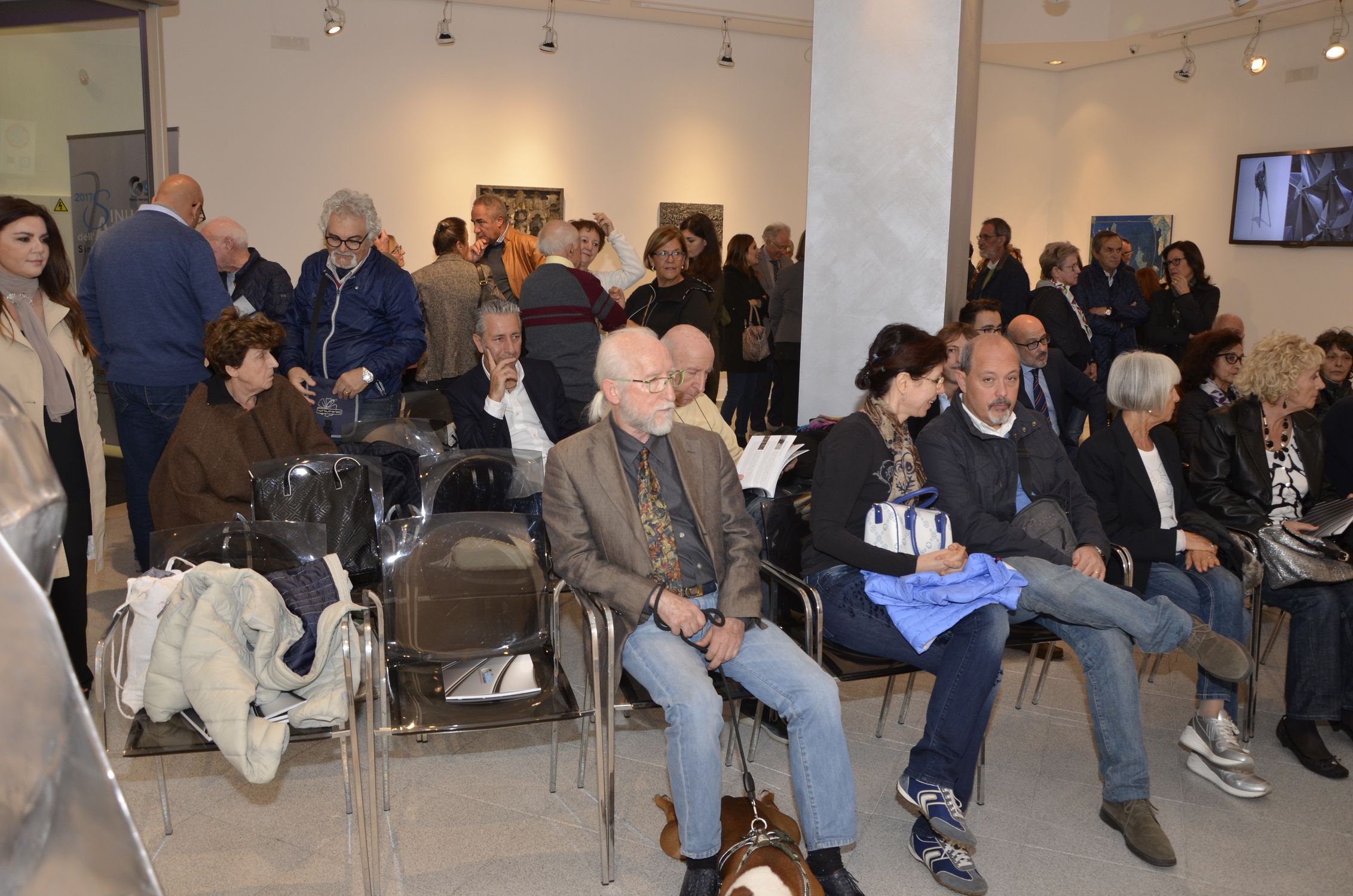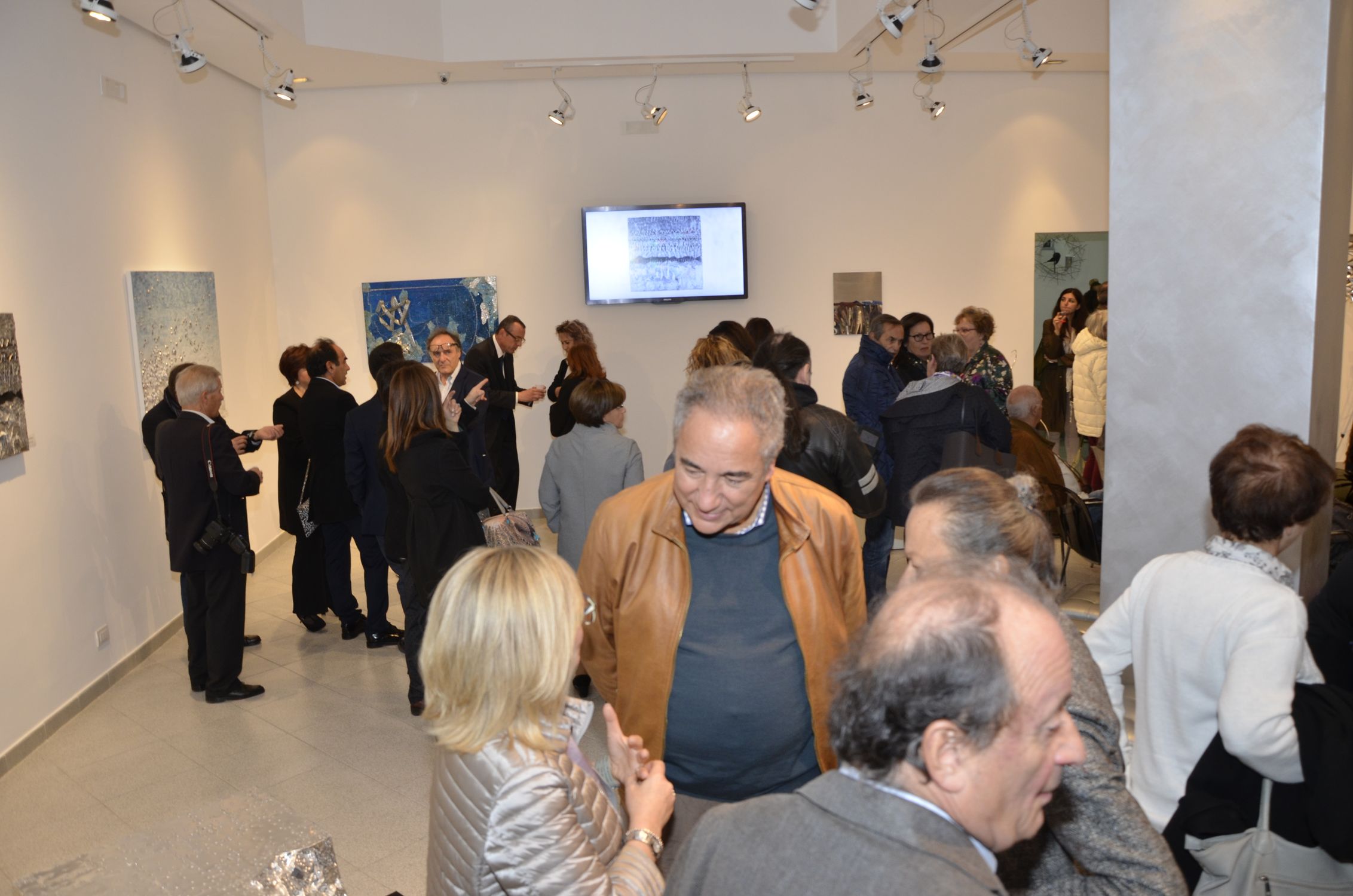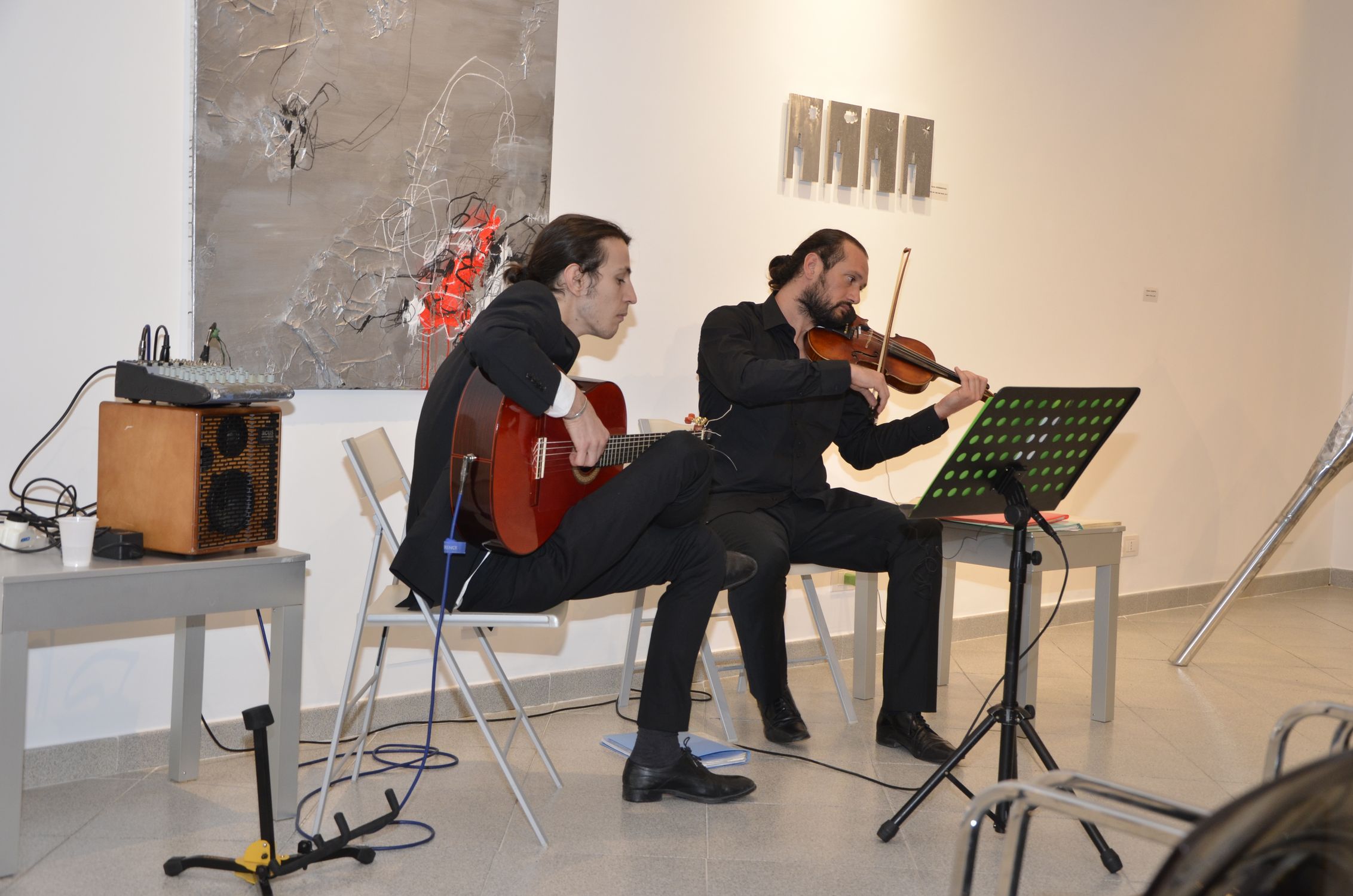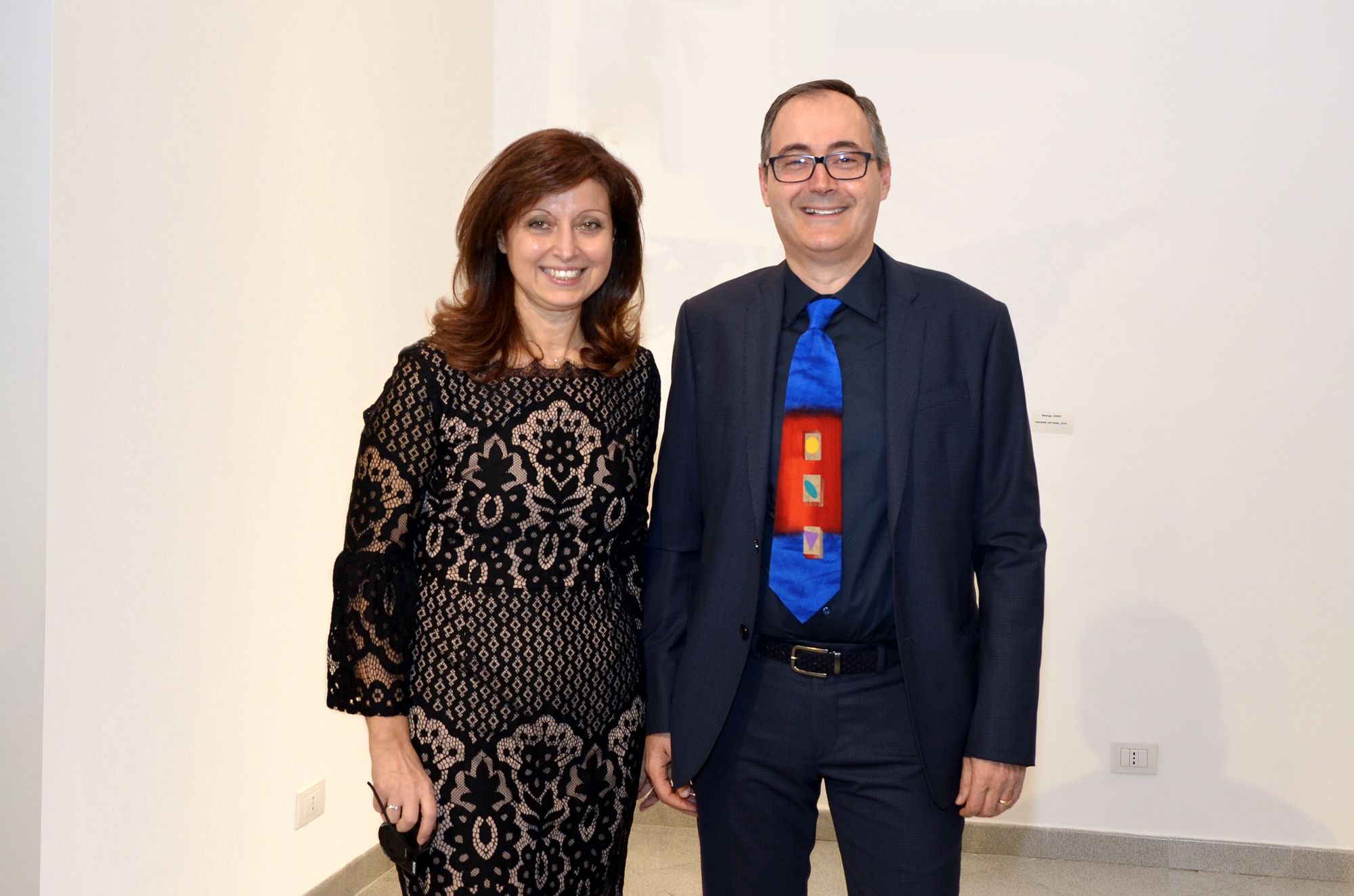THE THEME OF THIS EDITION
Among the properties of aluminum, plasticity is a real celebration of artistic freedom, a call to the artistic impulse and changeability that creative hands like to fully experience. In this concept the qualities of malleability and ductility of the metal, which allow rich expressive structures, are completely recognized. Particularly, we want to dwell on the sinuosity of aluminum, meaning elegance and smoothness of the process, both on the two-dimensional and on three-dimensional plan.
Sinuosity involves sensual curved games, movements that mobilize in the airspace or that expand on the plan. A path, a river, a profile, even a reasoning may be sinuous and enfold the attention in its path like music.
It is not by chance the poet Àngel Gonzàles, in the poem ‘I’m Bartók of everything’, speaks of ‘sinuous violas.’ When the stretch follows a charming style, it becomes like music. And we like to imagine that behind the artist’s work there is an all-encompassing music like Béla Bartók’s or a similar emotional effect.
Flexuosity, turning, twirl, hairpin turn, snaking, meander, bight: these are the possibilities the metal lends itself, in order to be sinuous and take us on the ways of art.
THE JURY
GIORGIO AGNISOLA
Art critic and essayist,
President of the Jury
He is an Art critic and writer. He is Professor at the Pontifical Theological Faculty of Southern Italy. He is also associate director of the Advanced Training School in Arts and Theology. He has collaborated with the cultural pages of the national newspaper ‘Avvenire’, especially on the Art section. For many years, he has worked as a consultant of Modern and Contemporary Art in French-speaking countries in Europe. He has written several books. Among the last ones, Viaggio nell’opera, vedere e sentire l’arte, (Moretti & Vitali, 2005), La pietra e l’angelo, (Guida, 2007), L’oltranza dello sguardo, in Friedrich, Monet, Cézanne, (Il pozzo di Giacobbe, 2010), L’avvertimento dell’oltre in Morandi, Rothko e Manzù (Il pozzo di Giacobbe, 2015), Itinerari dell’anima (Guida, 2016). He is a member of the International Association of Art Critics. He has curated international exhibitions, such as ‘Magnelli, works 1915-1970’, 2013, ‘Burri, unico e multiplo’, 2014, both held at the municipal art gallery of Gaeta.
ALFREDO LA MALFA
Lecturer and essayist
Born in Catania (Italy) in 1962, he worked as a teacher of Philosophy and History in high schools. Since 2012 he has been President of the ‘La Verde La Malfa – Parco dell’Arte’ Foundation, San Giovanni La Punta (Catania, Italy), where he designed the Room of Memory and the Room of Peace, which host permanent exhibitions of Lawrence Carroll, Angelo Casciello, Emily Joe, Fabio Mauri, Lolita Timofeeva, Cristina Treppo. At the same foundation, in 2015, he created a permanent section of ancient clothing. Since 2014 he has also been President of the ‘Casa della Divina Bellezza’ Foundation, Forza D’Agrò (Messina, Italy), an institute he conceived and founded to investigate the relationship between art and faith. Since 2013 he has been conducting international art exhibitions at the two Foundations.

Art critic and lecturer
Born in Velletri (Rome) in 1961, he is a Professor of Ancient Art History and Museography at the Academy of Fine Arts in Rome since 2008. He previously taught at the Brera Academy, Milan (1995-1997) and Naples Academy (1997- 2008), here taking care of the reconstruction of the Gipsoteca (2007). For the Vatican Museums, he directed the reconstruction of the Propaganda Fide Museum in Rome, in the Borromini Palace in Piazza di Spagna (2010). He has been involved in monographs and scientific articles, analyzing the relations between the Ancient Renaissance and Neoclassicism (focusing in particular on Antonio Canova), and in collection history, curating numerous exhibitions (including the Borgia collection, Naples, National Archaeological Museum, 2001).
LOREDANA REA
Art critic and lecturer
Historian and art critic, she is professor of Contemporary Art History History at the Academy of Fine Arts of Frosinone. She is director of the ‘Umberto Mastroianni’ Foundation of Arpino. She is also director of the Archives and Documentation Center of the Artistic Book of Cassino and the Visual Arts ‘Fuori Centro’ of Rome. From 2006 to 2014 she was curator of TraCarte, a two-year Biennial Workshop on Paper for the ‘Banca del Monte’ Foundation in Foggia. For the same Foundation she was a consultant for Contemporary Art. She has collaborated with specialist magazines and newspapers. She has published essays, critical texts, catalogs, and books. She has participated in conferences, held seminars and conferences and curated exhibitions for public and private museums and galleries, both in Italy and abroad.
MARIA GABRIELLA MAZZOLA
Aluminium Sector Manager
She runs the company CO.ME.L. along with her brother Adriano and her sister Luisa. She combines the technical and business preparation and organization and coordination skills, giving the company new guidelines such as the attention to communication, innovation and marketing strategies. She has always supported, personally and with the company, activities in favor of the territory: art exhibitions, publications, visual arts exhibitions, short film festivals and animal protection. In December 2012 Maria Gabriella received an important recognition for entrepreneurial merits by the Cultural Committee ‘Nuova Immagine Latina’, which awards the most influential people in town. She is President of the Cultural Association ‘Vanna Migliorin’ that promotes and spread events and intellectual works of Contemporary Art in all kind of expressions.
THE 13 FINALISTS
THE WINNERS
MINUTES OF THE JURY OF THE
COMEL AWARD VANNA MIGLIORIN 2017
On October 16, 2017, at 5 p.m., at the Spazio COMEL, in Latina, the selection board met to decide on the winners of the 6th COMEL Vanna Migliorin Award. The jurors were: Maria Gabriella Mazzola, Alfredo La Malfa, Marco Nocca, Loredana Rea, and Giorgio Agnisola, the jury president.
After a preliminary greeting by Maria Gabriella Mazzola, curator of the award, who has thanked the jurors for their presence and reminded the motivations and characteristics of the initiative, the president invited the jurors to individually perform an analysis of the thirteen finalist works in the gallery, formulating a shortlist in order of merit and a reserve. Subsequently, the jury members decided to draw up a ranking according to their preferences, accompanying them with detailed criticisms.
Finally, after a serene evaluation of the results achieved and after an equally serene discussion, the Jury decides that the winner of the sixth edition of the COMEL Vanna Migliorin Award is: “Senza titolo“, (2016), by Rosaria Iazzetta with the following motivation:
“The work imposes itself for its strongly allusive design of anthropomorphic nature and for its specific and evocative metal work, molded and welded with great expertise. The final result is an original and humanized shape outlined in a dramatic and futuristic way.“
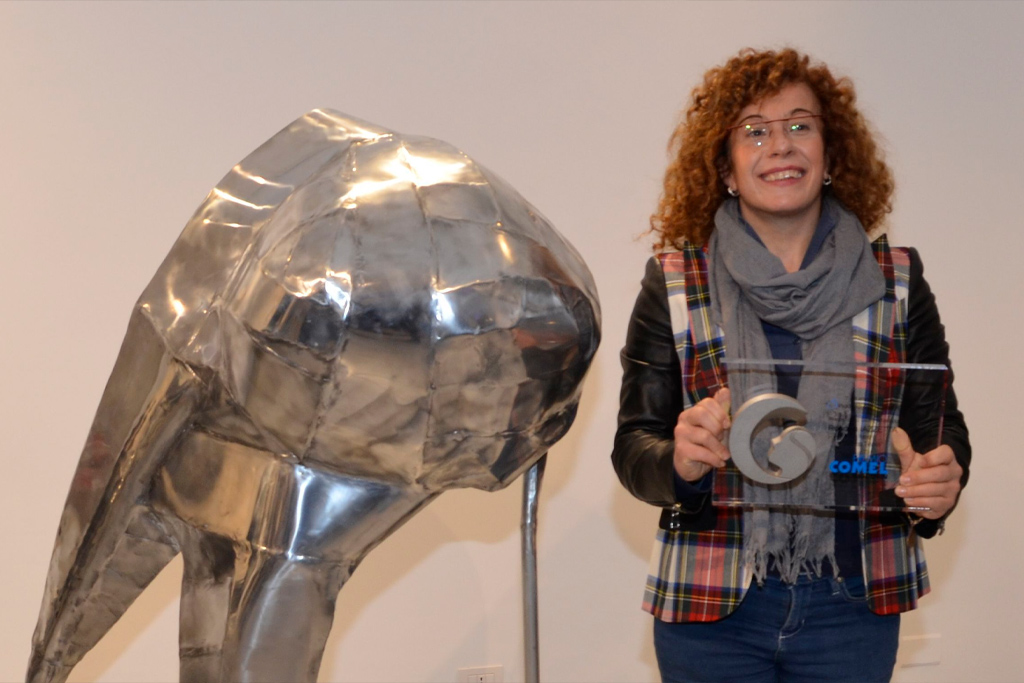
The Jury also decides to report three works with a special mention.
These works were:
“Sigmund“, (2016), by Lele De Bonis, for the following motivation:
“The idea of the fragment as part of an all-organic and geometric feature characterizes Lele De Bonis’s work. The fragment of an evocative metal cube, placed alongside it, is exhibited as alteration and loss of a definite formal and psychic balance, but also as the principle of a new spiritual and expressive freedom.“
“Acqua“, (2017), by Lorenzo Galligani, with the following motivation:
“Thanks to a remarkable use of molten metal, Lorenzo Galligani recovers, the suggestion of classical sculpture within a strongly allusive context in a conceptual key. In fact, the work presents a peculiar signaling tension, perhaps referring to a psychological reflection, symbolically expressed in a naturalistic space.“
“Holding Pattern“, (2016), by George King, with the following motivation:
“George King’s work is a suspended object capable of oscillating, capturing light and wind with astonishing visual effects. It is an installation skillfully realized by assembling identical elemental aluminum shapes that, as a whole, recall a sort of rotor capable of penetrating the space with subtle lightness.“
The Audicence Award goes to Emilio Alberti for the artwork “Onda”.
The jury offers its most sincere congratulations to the organizers, acknowledging the quality of the prize and the works presented in this edition, and sends its most sincere wishes for the upcoming editions.
Latina, October 16th, 2016
PHOTO GALLERY
The setting of the exhibition
Vernissage, october 7th, 2017 with the extraordinary participation of the Masters Lucia Dorelli (violin) and Fabrizio Dell’Anna (cello)
COMEL Award Cerimony of the Winner, october 28th, 2017 with the extraordinary participation of the Masters Claudio Merico (violin) e Riccardo Garcia Rubi (guitar)

